Time Traveler
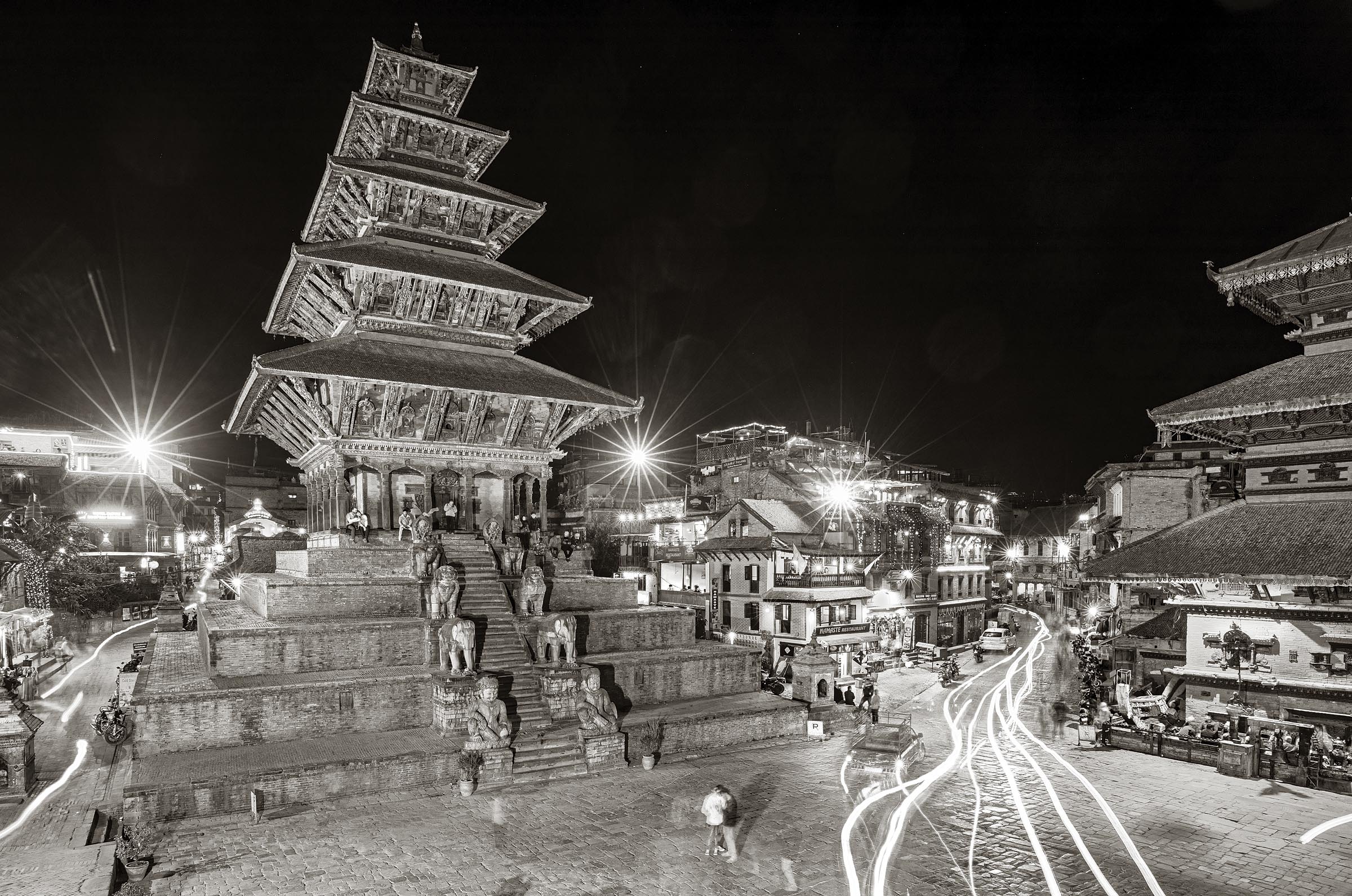
Nyatapola Temple in Taumadhi Square is the tallest pagoda-style temple in all of Nepal.
Exploring the ancient city of Bhaktapur, Nepal
Throughout its long life, the ancient city of Bhaktapur in Nepal’s Kathmandu Valley has survived earthquakes, political upheaval, and economic challenges, and yet it continues to extend to the world its welcoming hospitality and unique charm.
During a recent visit to Bhaktapur I couldn’t help but be aware of the feeling that upon passing the gate to the city I was struct with a feeling that I had stepped back in time. Walking along the brick-lined streets I first passed through its magnificent Durbar Square which had suffered significant damage in the 2015 earthquake. Much of the old city experienced a similar fate from that ground shaker. Efforts have been ongoing ever since to preserve, support, and resurrect as much as possible. It’s actually difficult to find a building that is not damaged or leaning in a precarious way. Nevertheless people continue to go on about their daily lives and occupy many of these structures. Some of them date back to the fifteenth century.
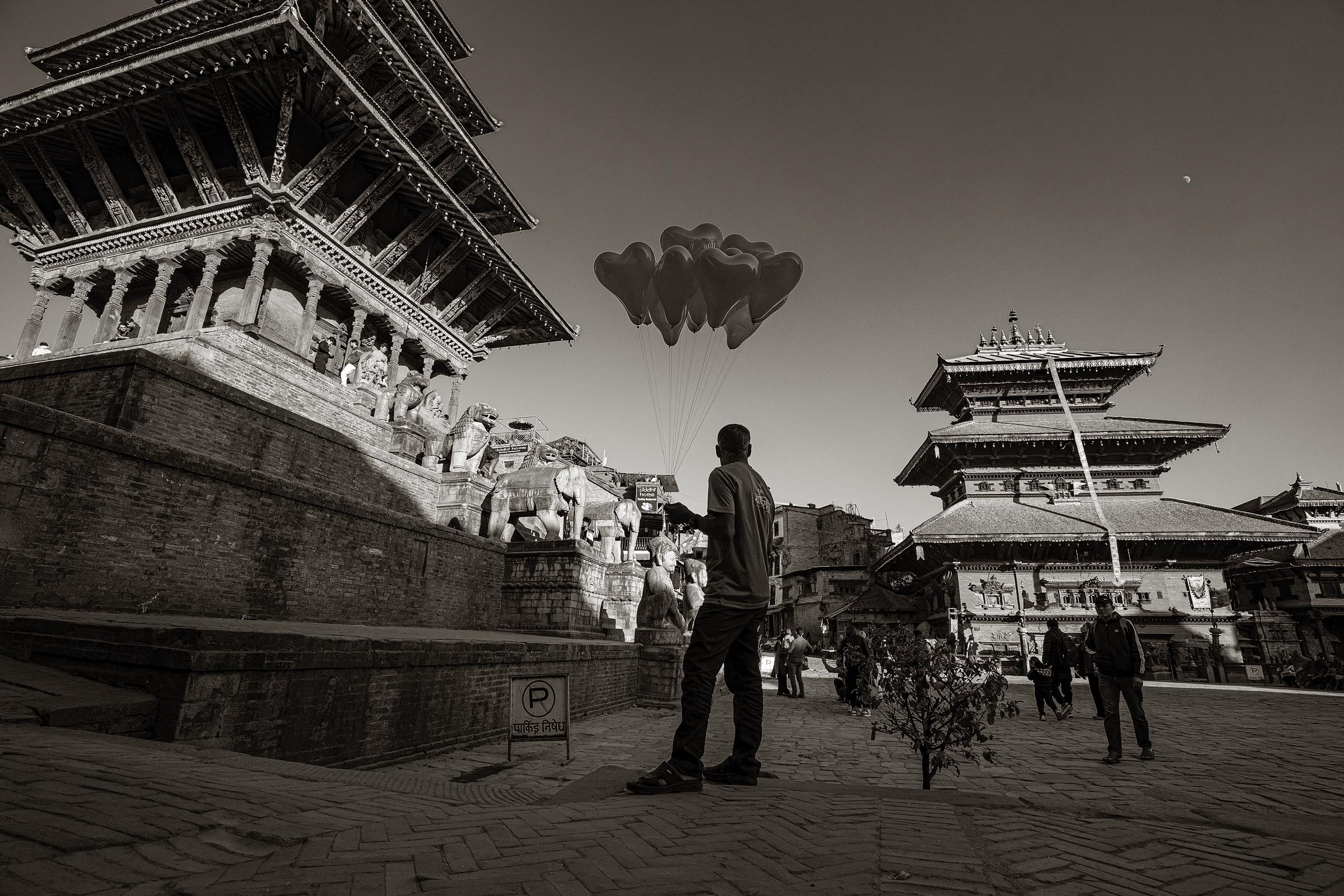
Taumadhi Square
The city is a wonderful place to simply walk and explore the countless number of streets and small alleys. In contrast to Katmandu with its traffic chaos, the local government limits the number of vehicles allowed in the old city. One can freely walk without fear of being rundown by a speeding motorist. As I continue my exploration I pass by shops selling everything from fruits and vegetables, to crafts and art, to garments. As I stroll through each square I randomly choose a narrow street to head down and am intrigued by the architecture, artistry, and daily life presented in front of me. I’m also amazed by all the small temples and shrines scattered around the city.
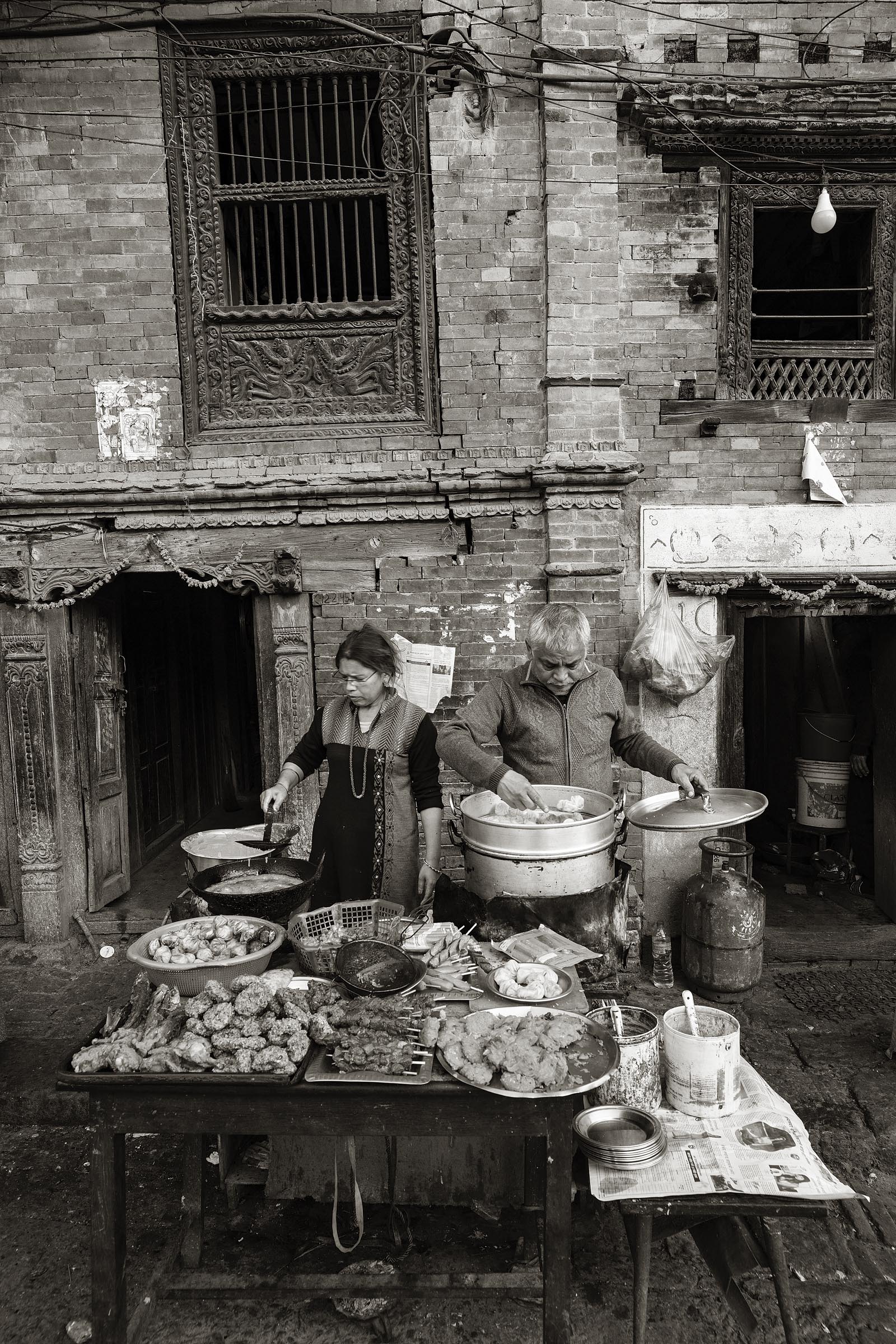
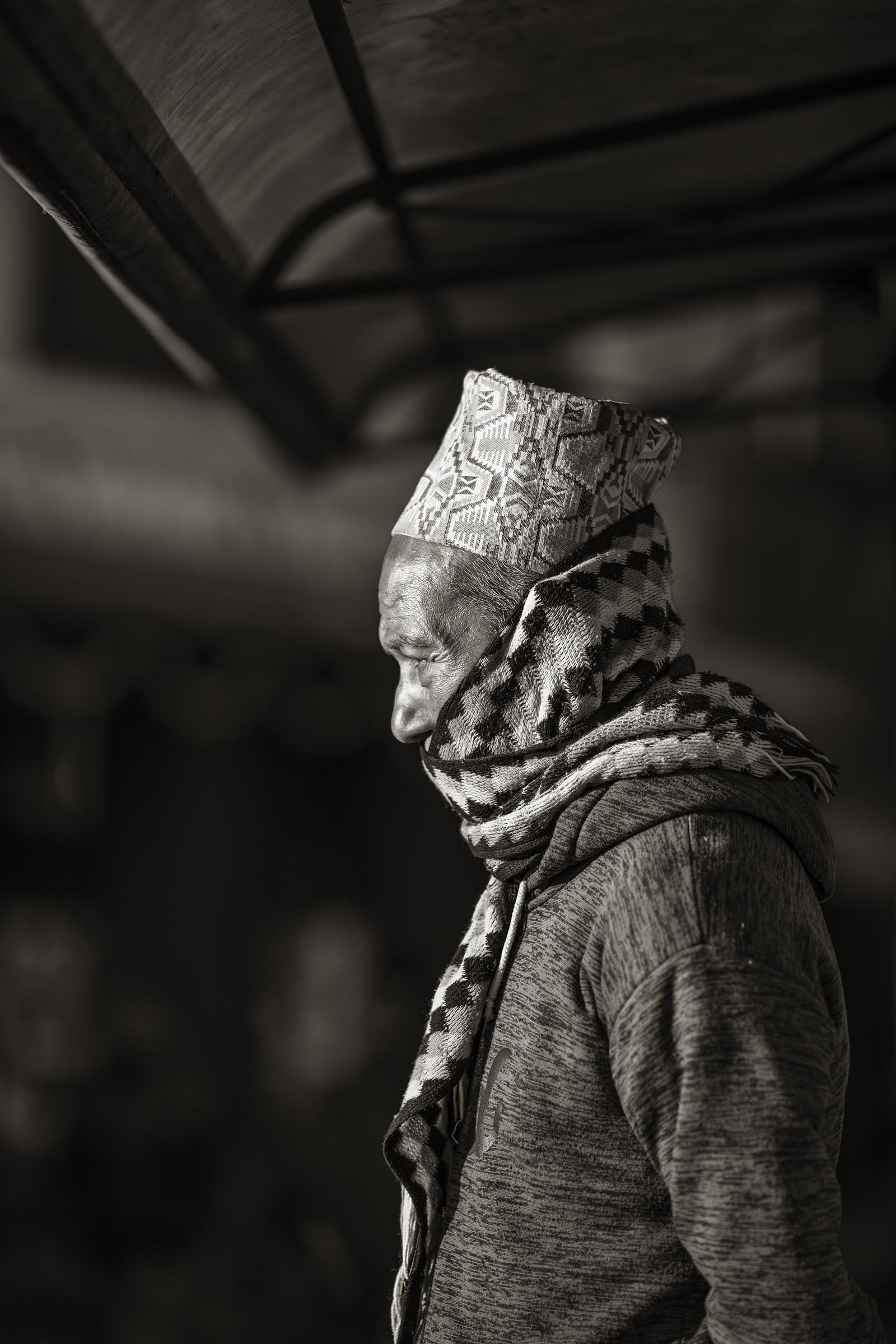
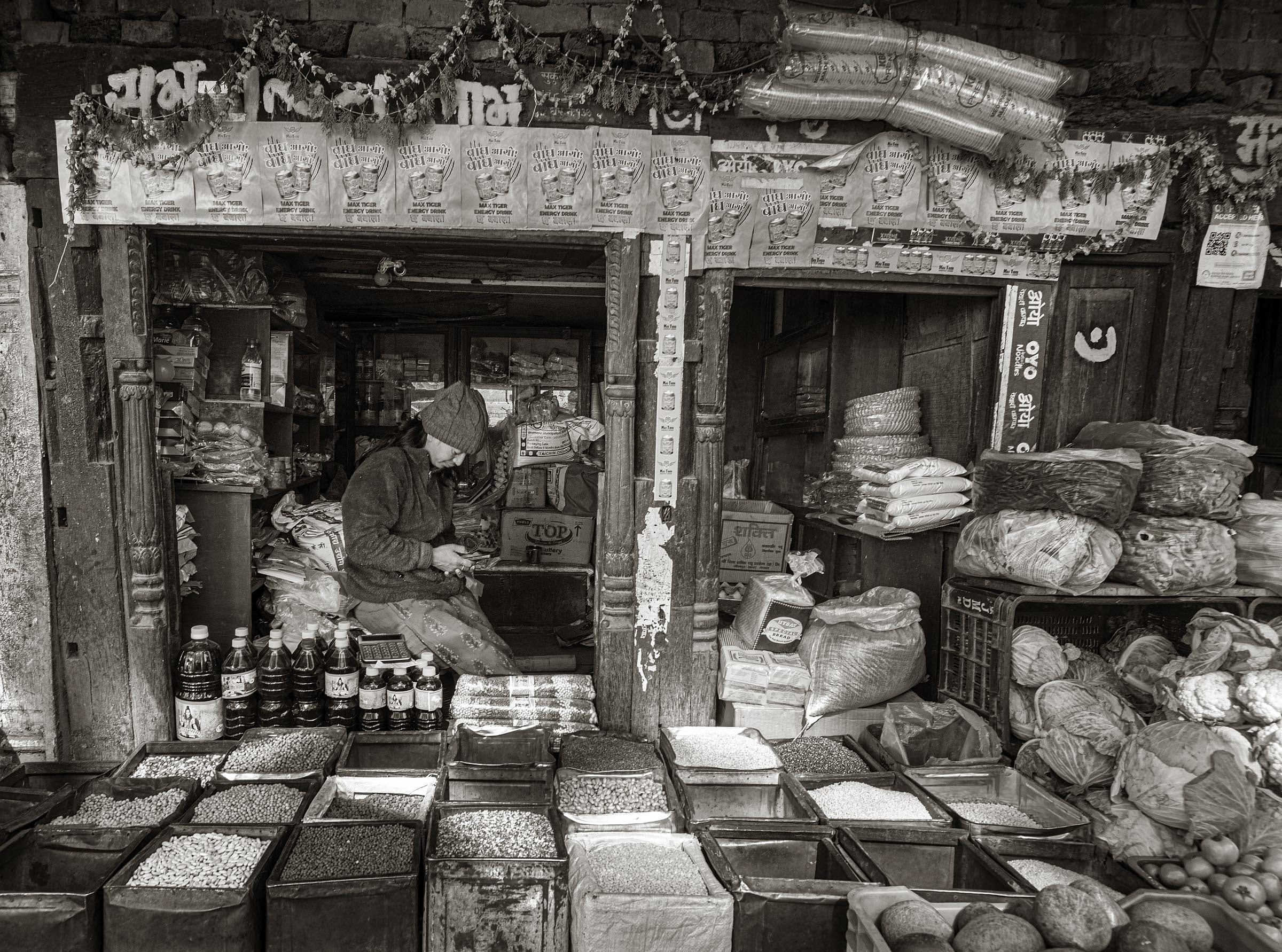
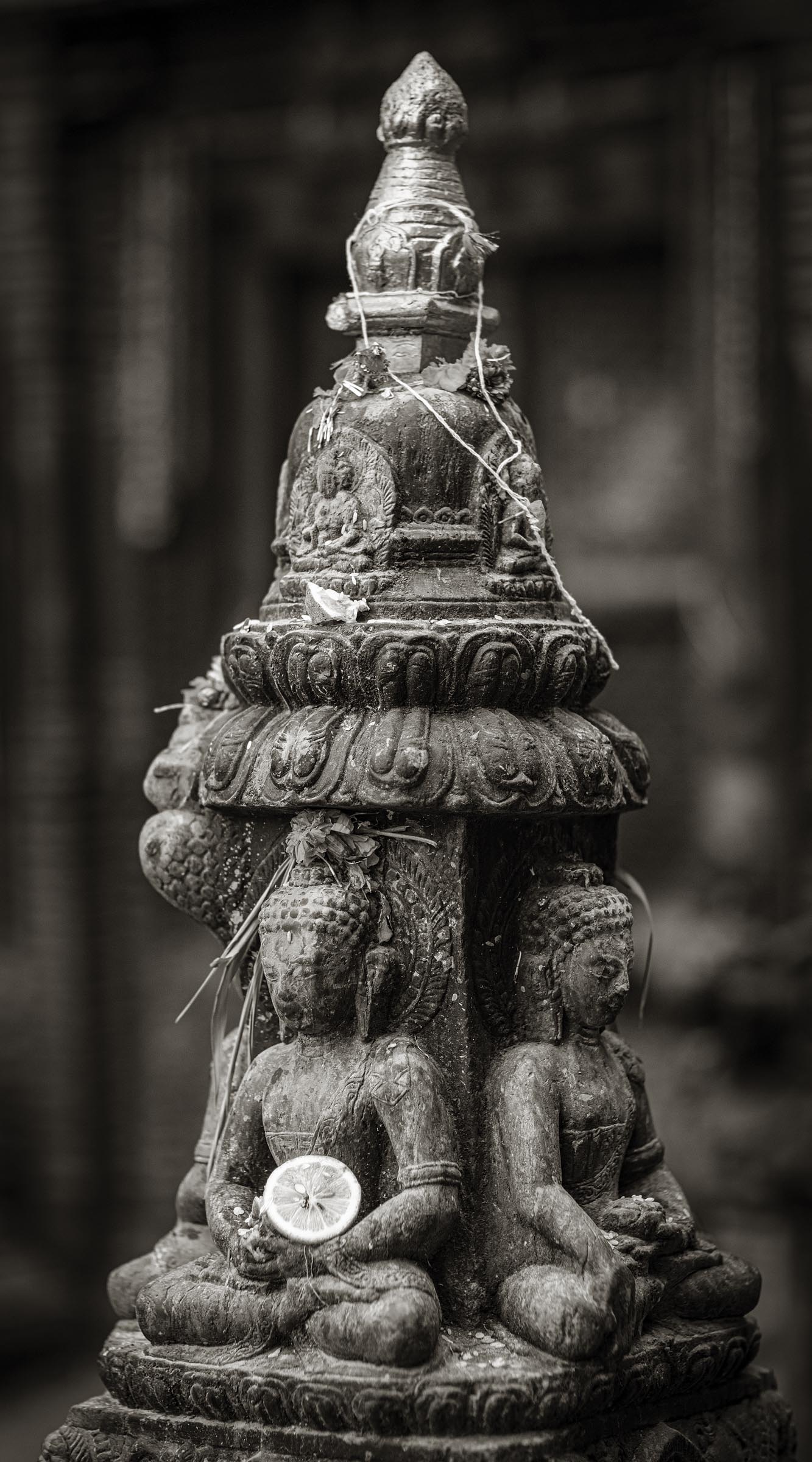
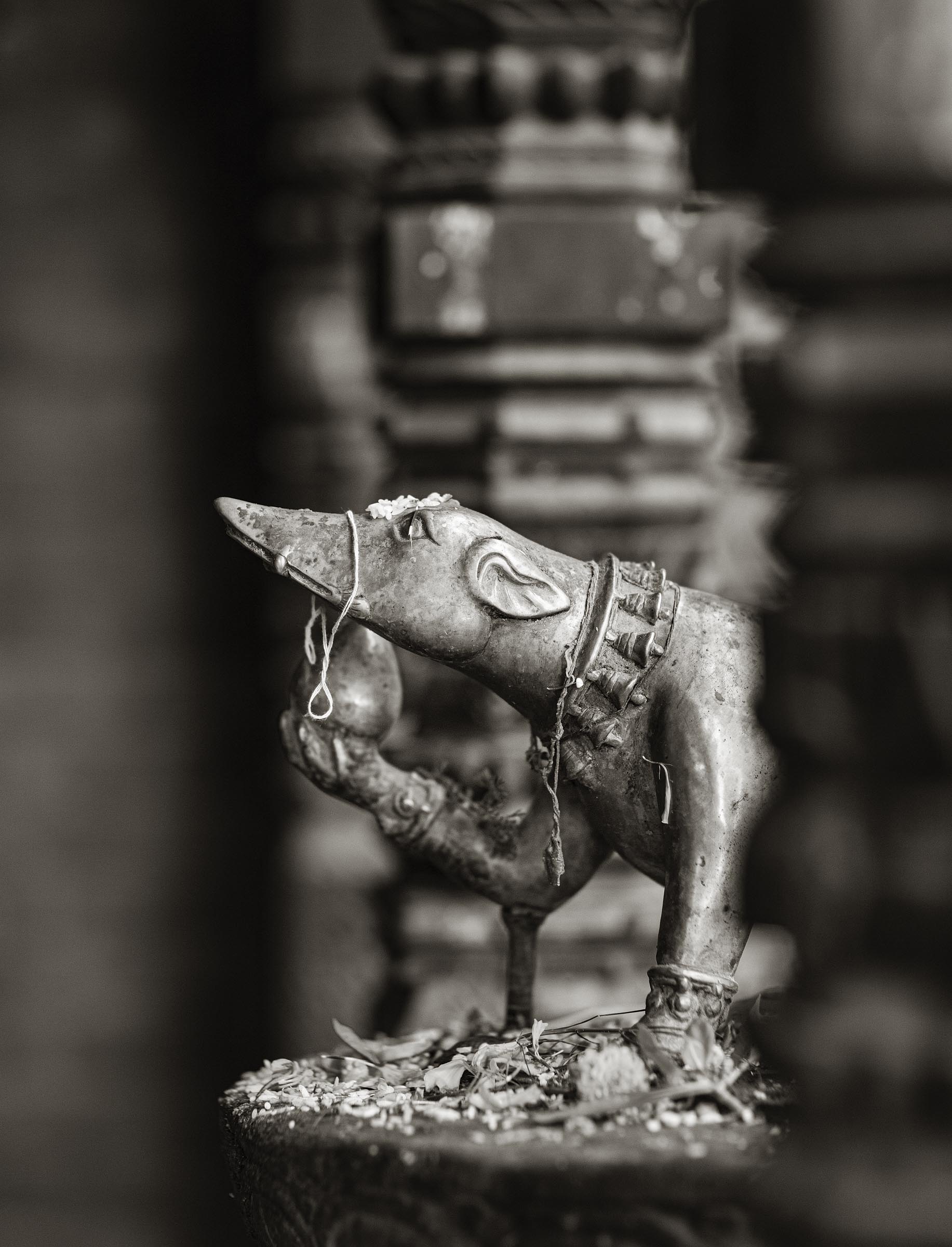
Around every corner one finds something intriguing from shops selling daily essentials and street food to courtyard shrines to what seems like an infinite number of temples all dedicated to a variety of Hindu gods.
Because of its close proximity to Kathmandu, Bhaktapur is visited by most tourists just for the day. By noon, the city center is full of them, but by early evening, the streets are given back to the local Newar people. It’s at morning and evening that Bhaktapur can really be enjoyed. One day I got up and early and set out along one of its many narrow streets. I soon heard the sounds of children gathering at a school to start their day. Approaching the entrance, I peered in, and an administrator invited me to observe their morning ritual. The students, all lined up in their uniforms according to age, listened carefully as the principal made some announcements and then led them through morning exercise. And although it was apparent that the presence of this strange foreigner piqued their curiosity, they commendably maintained their focus and composure.
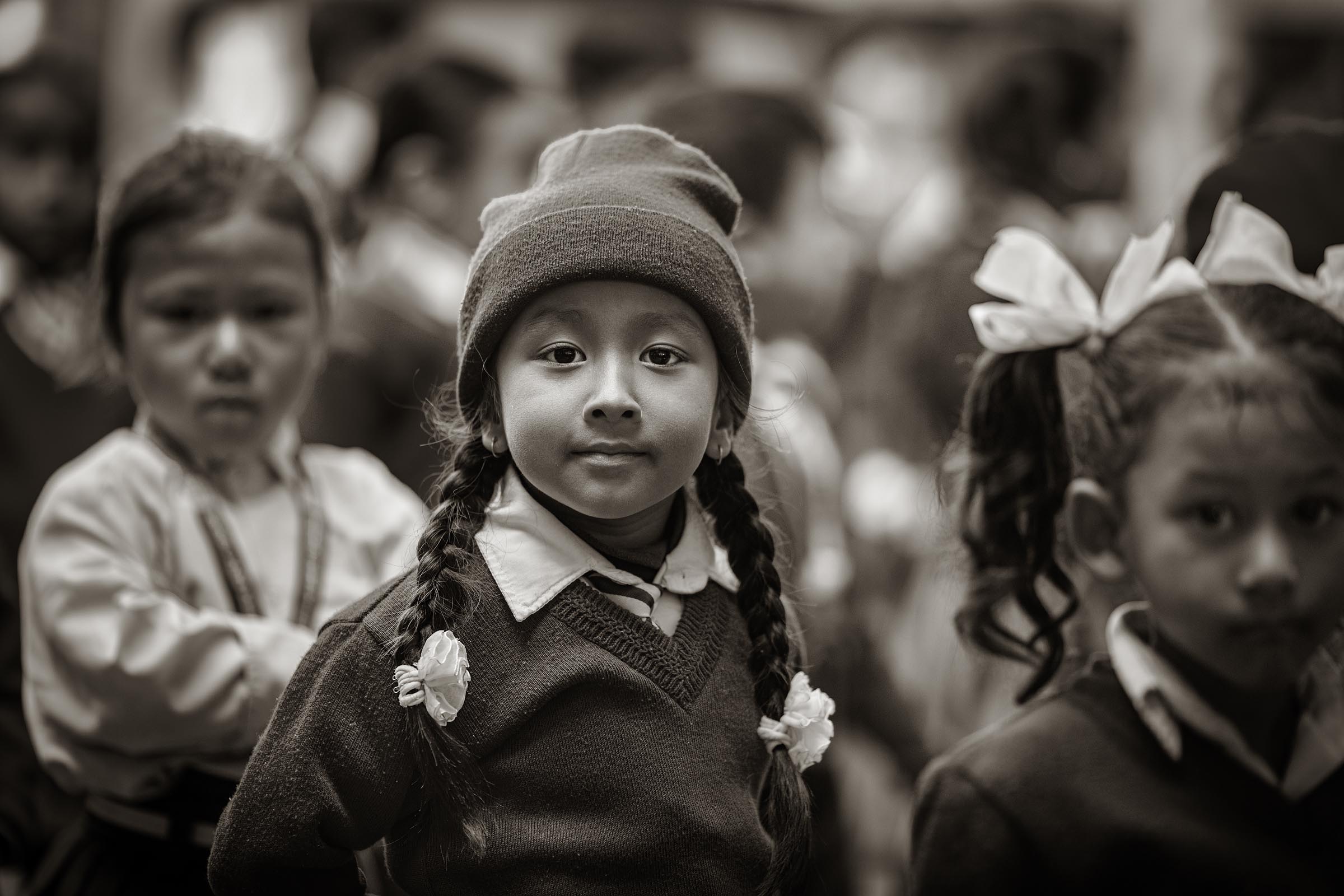
Students gathers in their school’s courtyard as they prepare for a new day of studies.
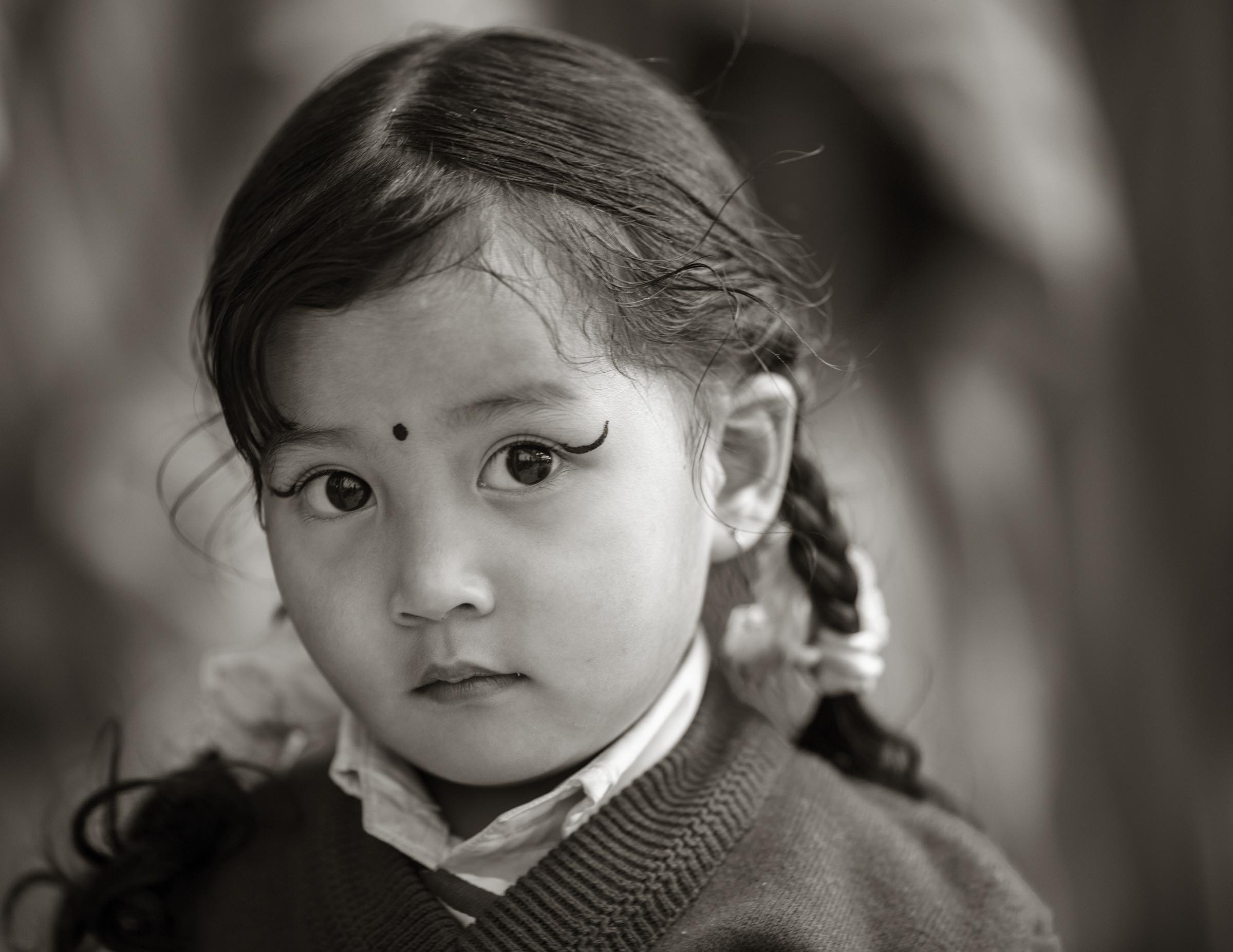
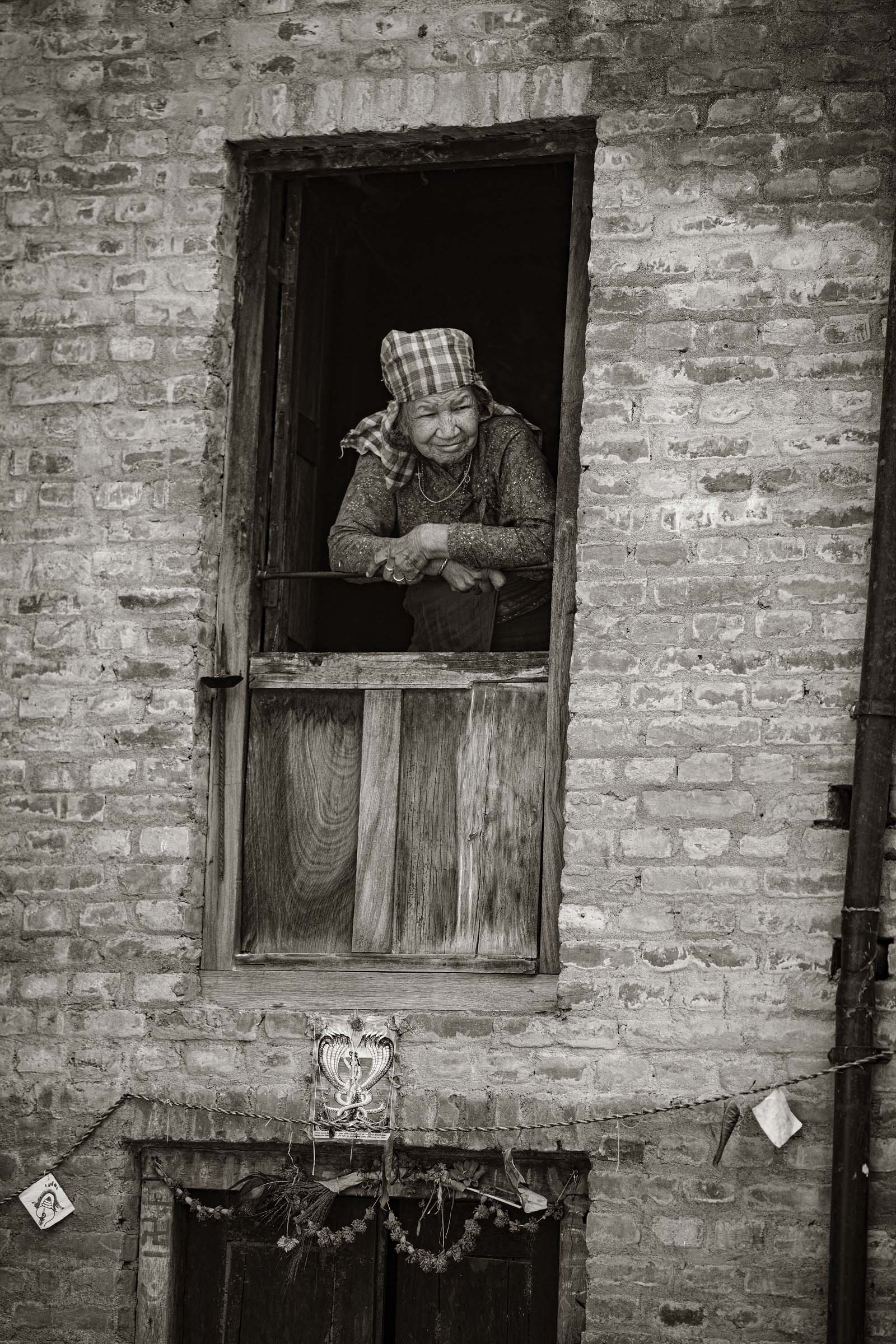
As a new day begins to unfold an elderly resident watches as children head off to school from her window above a small courtyard.
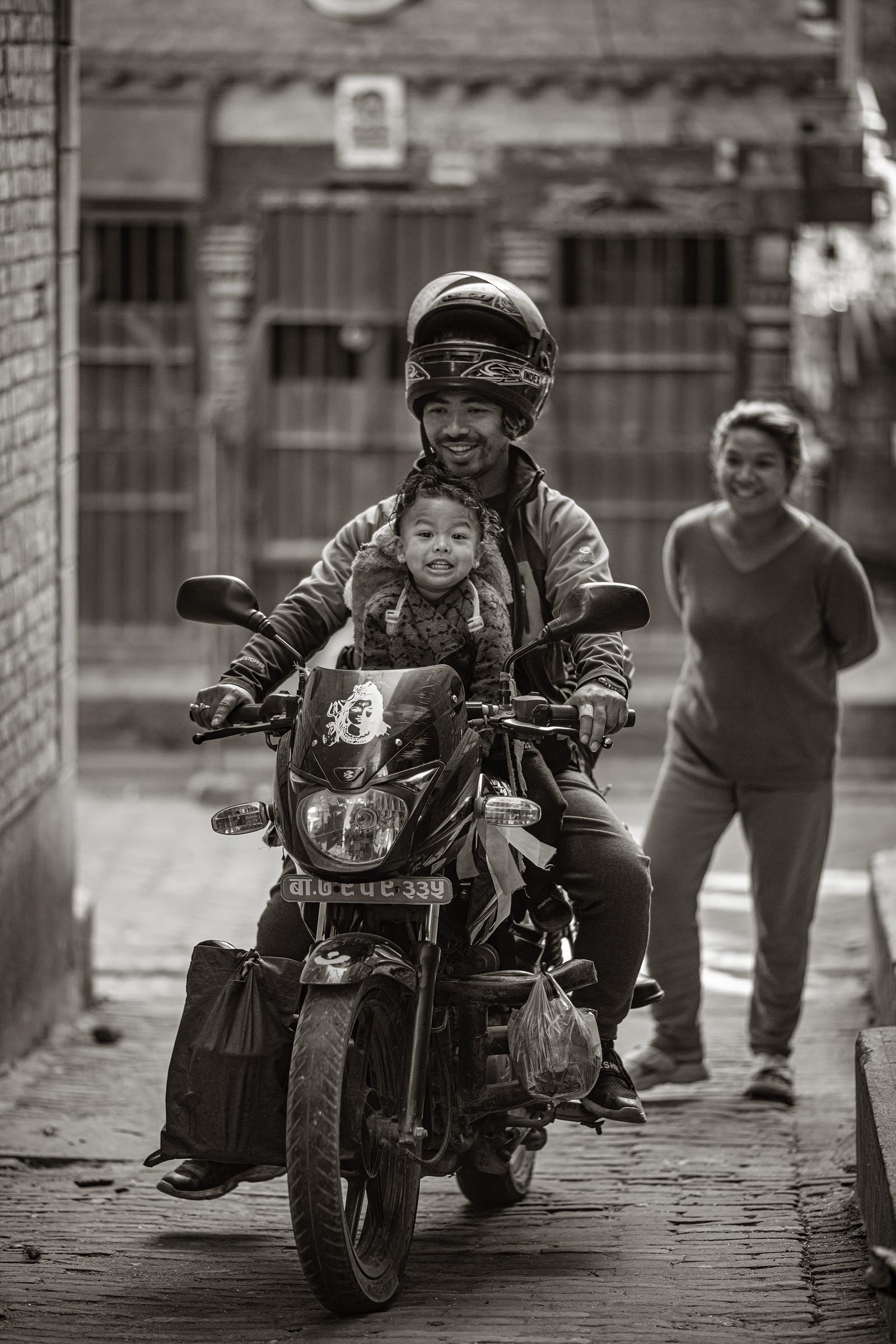
An excited youngster enjoying a ride to school on his father’s motorcycle.
Bhaktapur is a city loaded with workshops producing wood carvings, Buddhist paintings, handmade paper, and pottery. Among them is a traditional printing shops called The Peacock. When I first entered, I thought it was merely an interesting stationery store. But after being led through a small doorway and up some stairs, I was suddenly in a labyrinth of rooms and more floors filled with Buddhist and Hindu statuary, as well as structural remains from old Bhaktapor structures that hadn’t survived the years. I eventually popped out on the rooftop, where workers were busy making handmade paper and also printing paper using a traditional spot color technique. Seeing such processes still alive and functioning is always satisfying. A piece of paper is placed in a form, a stencil is laid on top of the paper, and smattering of colored ink is dragged over the stencil. The paper is then removed and placed on a drying rack and the process is repeated. This method of printmaking goes back hundreds of years, perhaps to the ninth or tenth century.
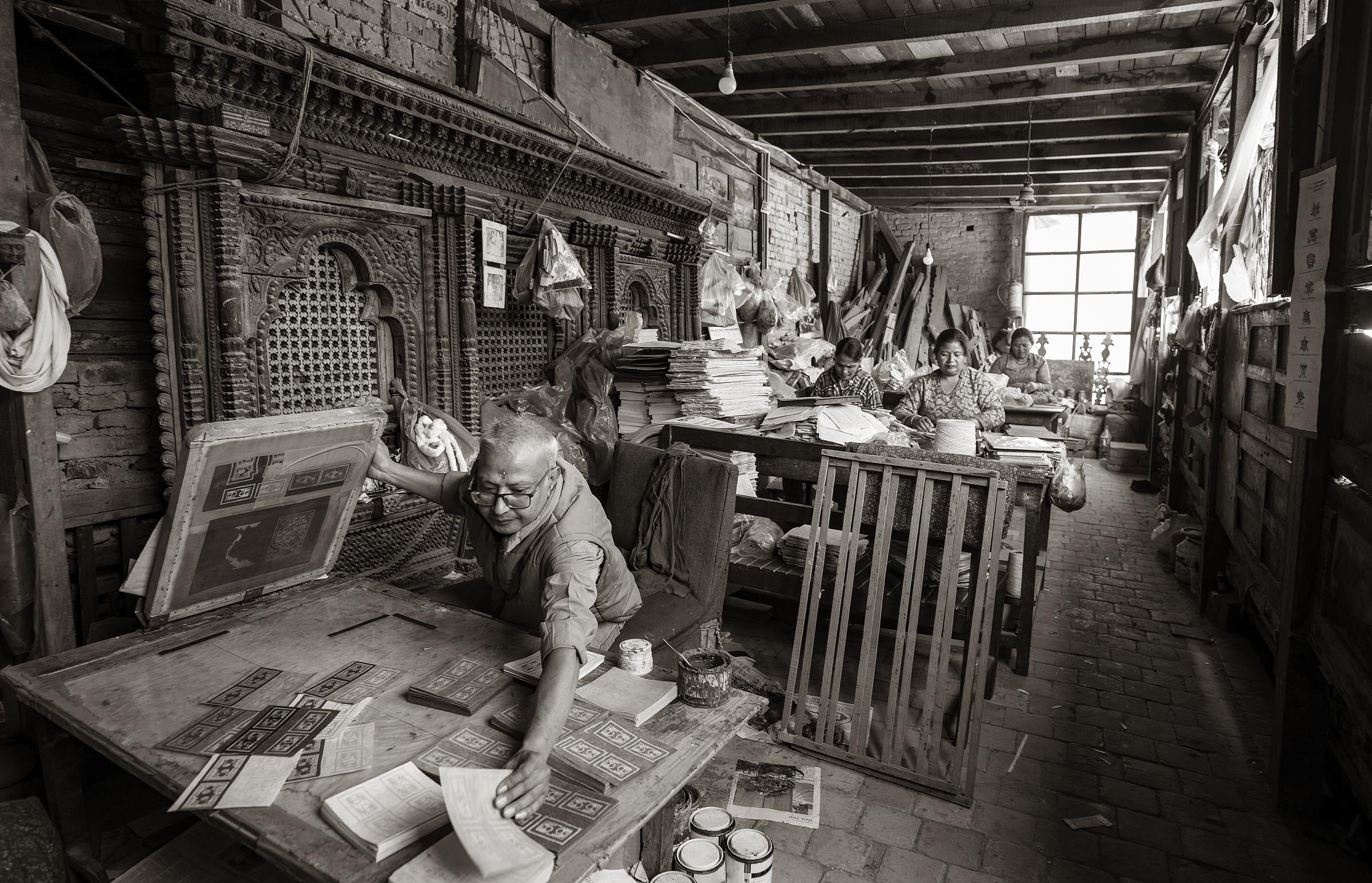
At work in the Peacock Shop where this method of printing dates back hundreds of years.
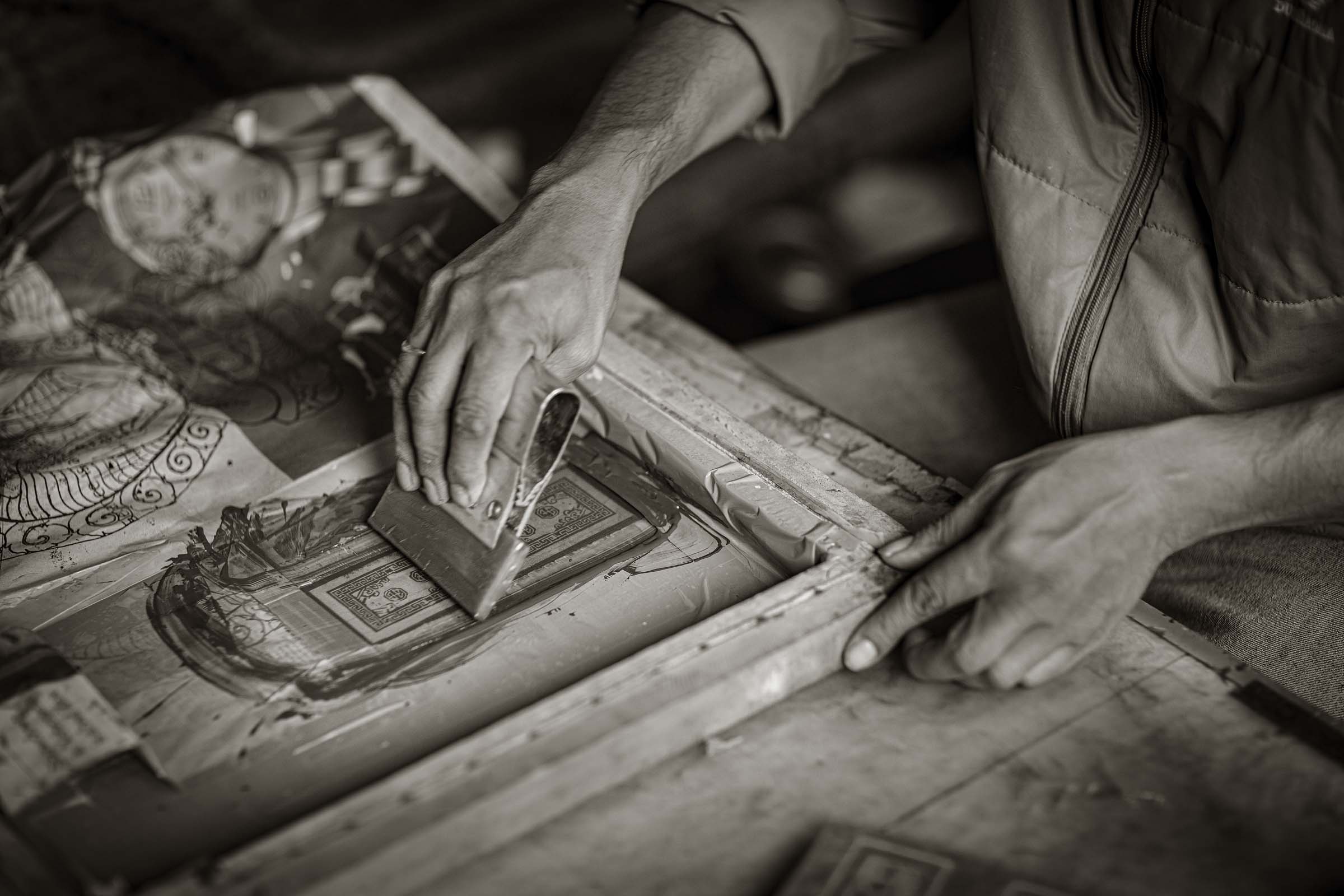
Hand made printing using a stencil and ink one sheet at a time.
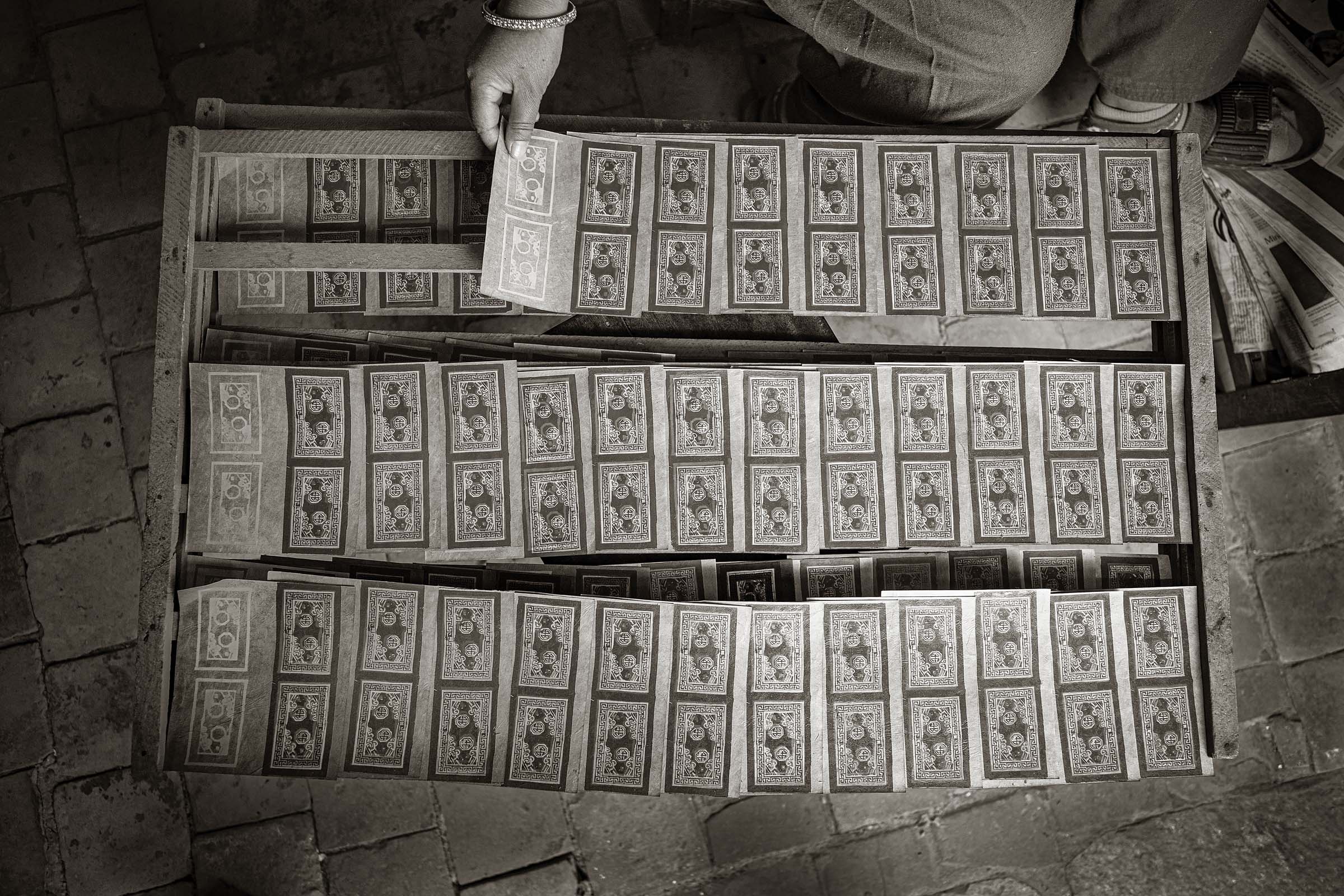
Freshly printed items are layed on racks to dry.
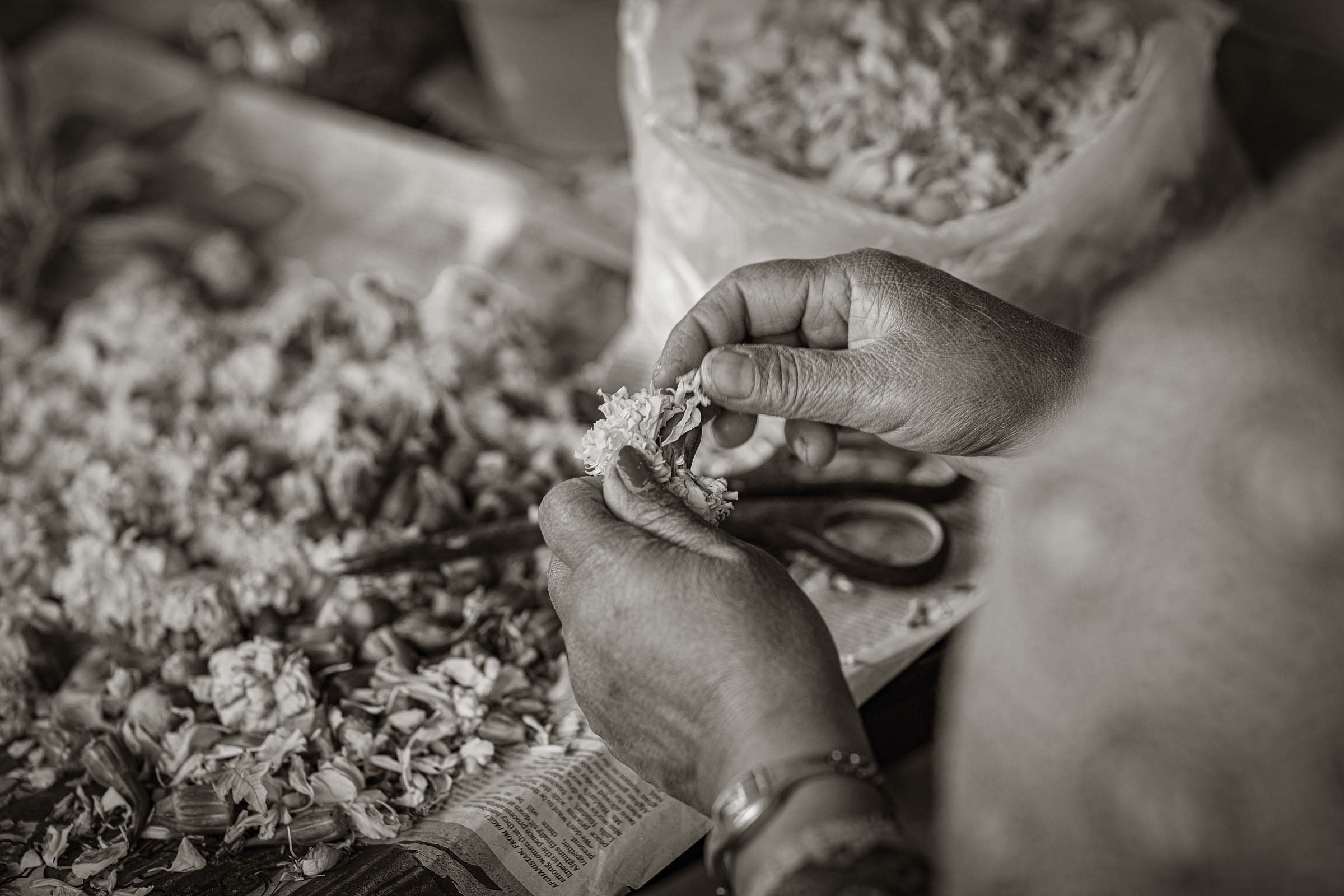
In addition to traditional printing methods The Peacock Shop also produces handmade paper using local sourced wood pulp and decorated with a variety of leaves and flowers, such as the marigold which has religeous and cultural significance in Nepal.
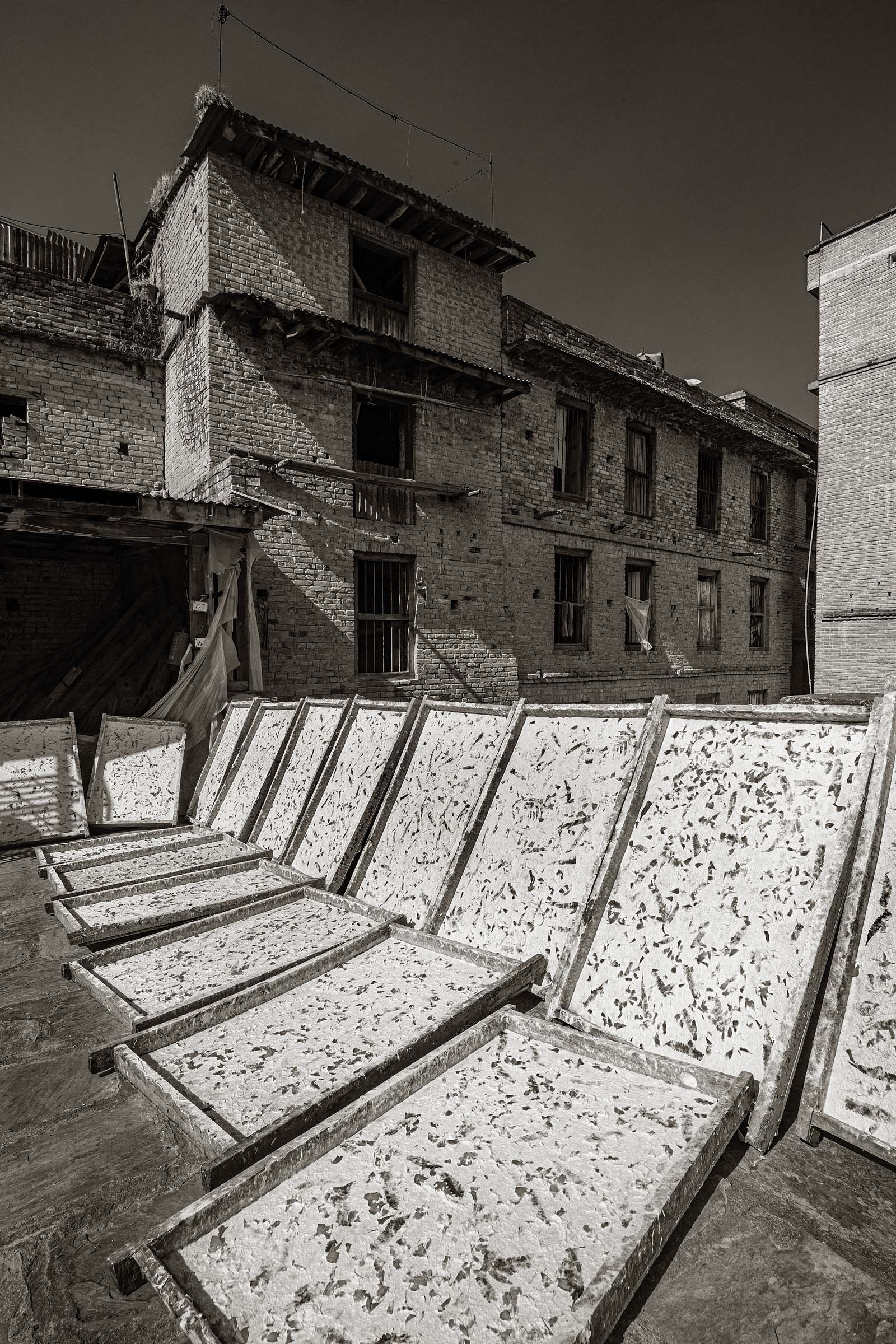
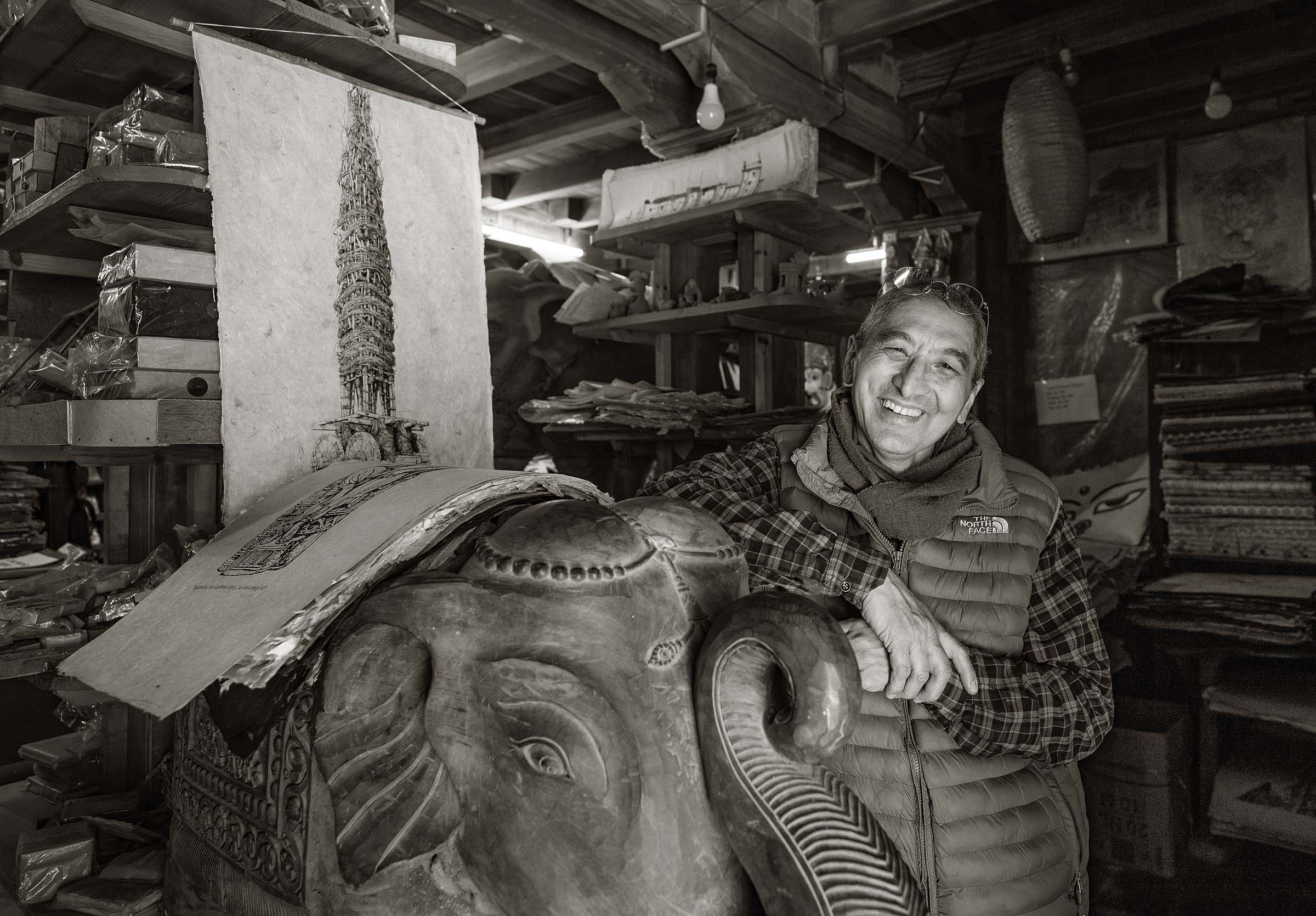
Ram Narayan Prajapati, owner of the Peacock Shop.
It seemed that along every street or in the city’s many squares I was introduced to a host of activities. In a small warehouse down one narrow alley sat a woman with a mound of ground turmeric in front of her. In the light of a narrow open door, she painstakingly measured out small quantities of the yellow spice and placed them in little bags destined for markets around the city.
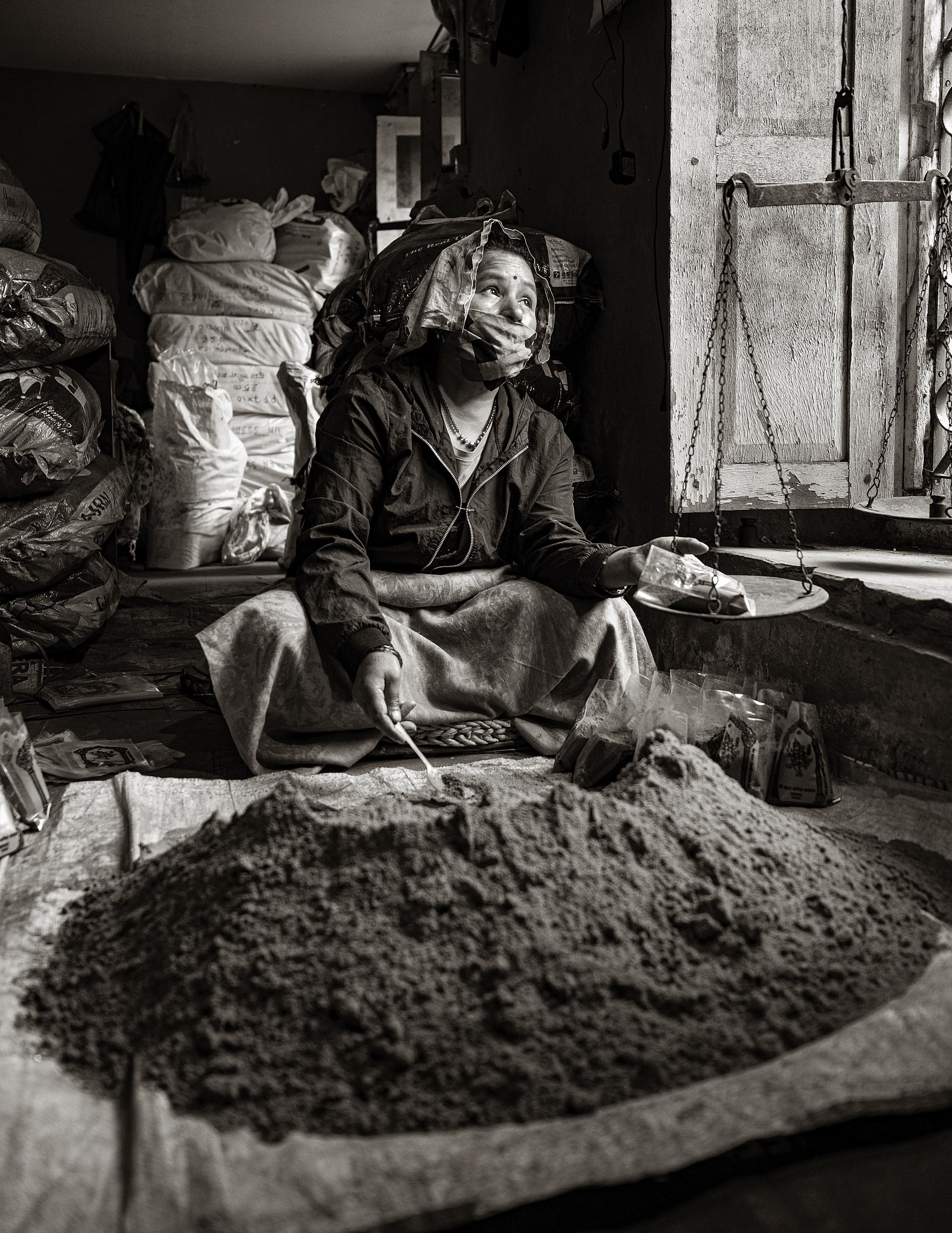
Packaging up tumeric one spoonful at a time.
At Potters Square, craftspeople work tirelessly to produce a variety of turned pottery. As one artisan molded the clay into the desired shape, another would pick it up and take it to be dried in the warm afternoon sun.
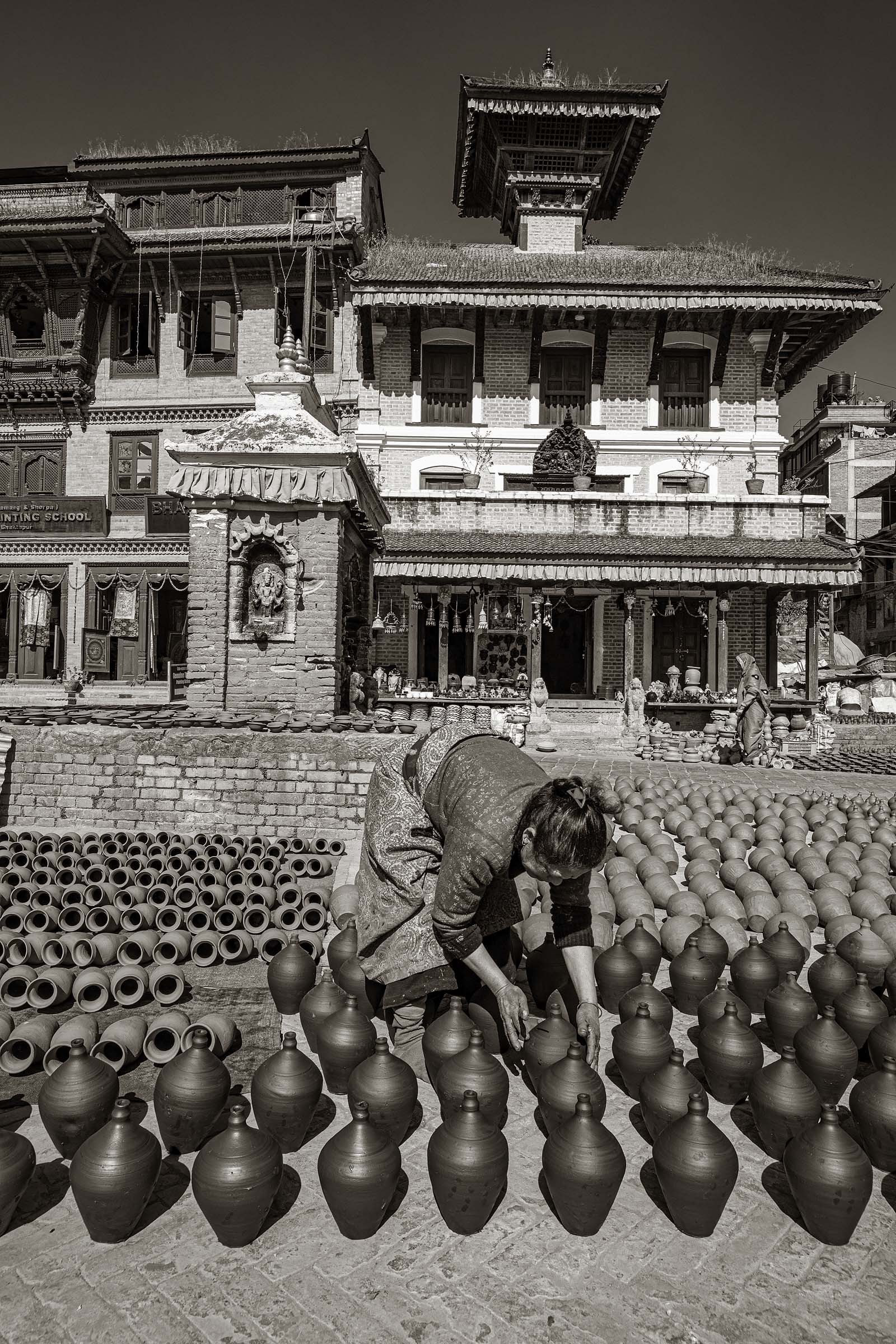
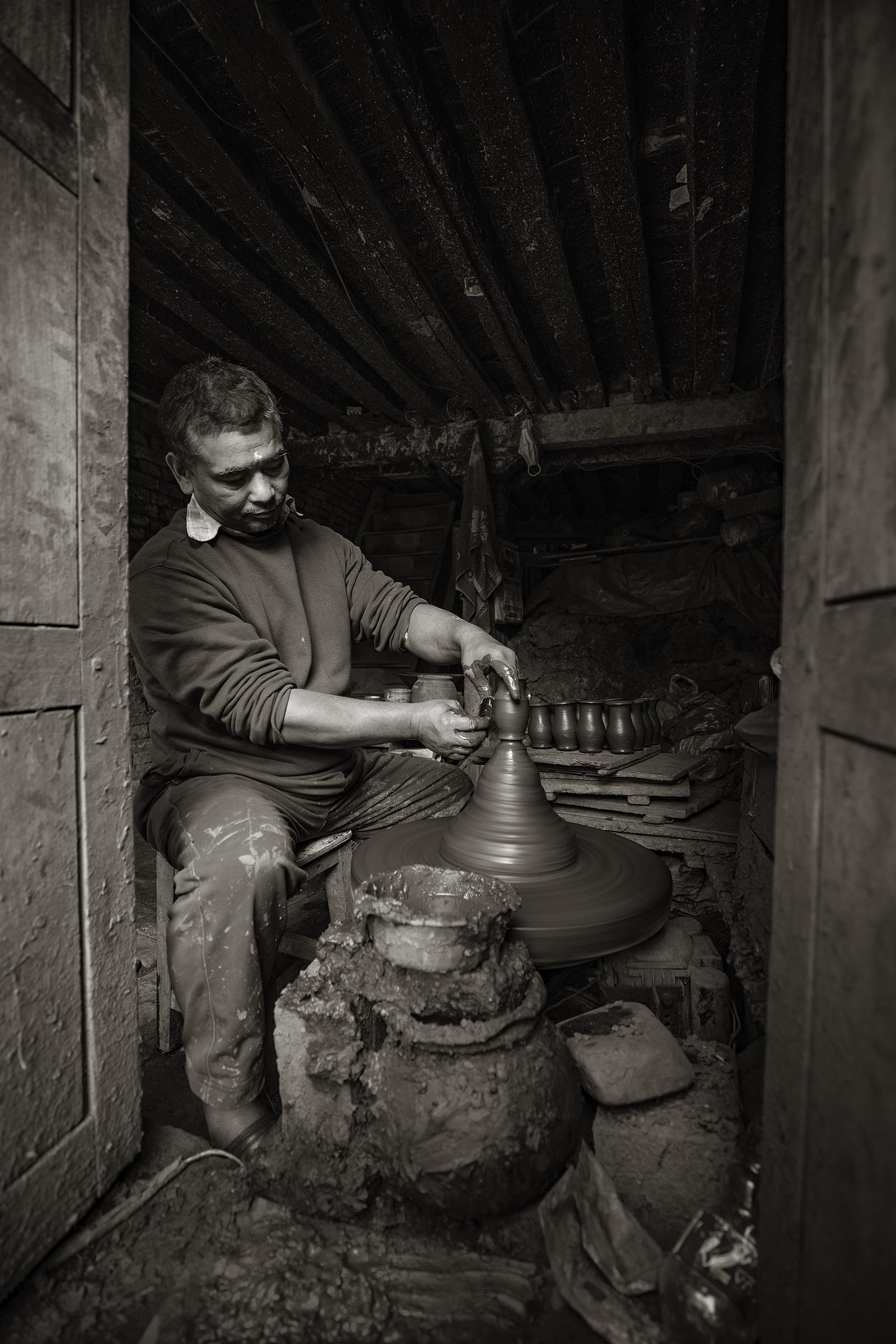
As with any new place I visit, I wanted to try the local cuisine. The inhabitants of Bhaktapur are Newar, and while their food is similar to what is found in the rest of Nepal, there are some unique differences. One immediate observation the way they prepare rice. Rather than the typical steaming or boiling, they use a technique by which the rice is soaked in water and then beaten flat and left to dry. It is served as part of a traditional dish called samy baji, in which the rice, served dry, is generally surrounded a variety of preserved vegetables, meats, black soybeans, potatoes, a lentil patty, and an egg.
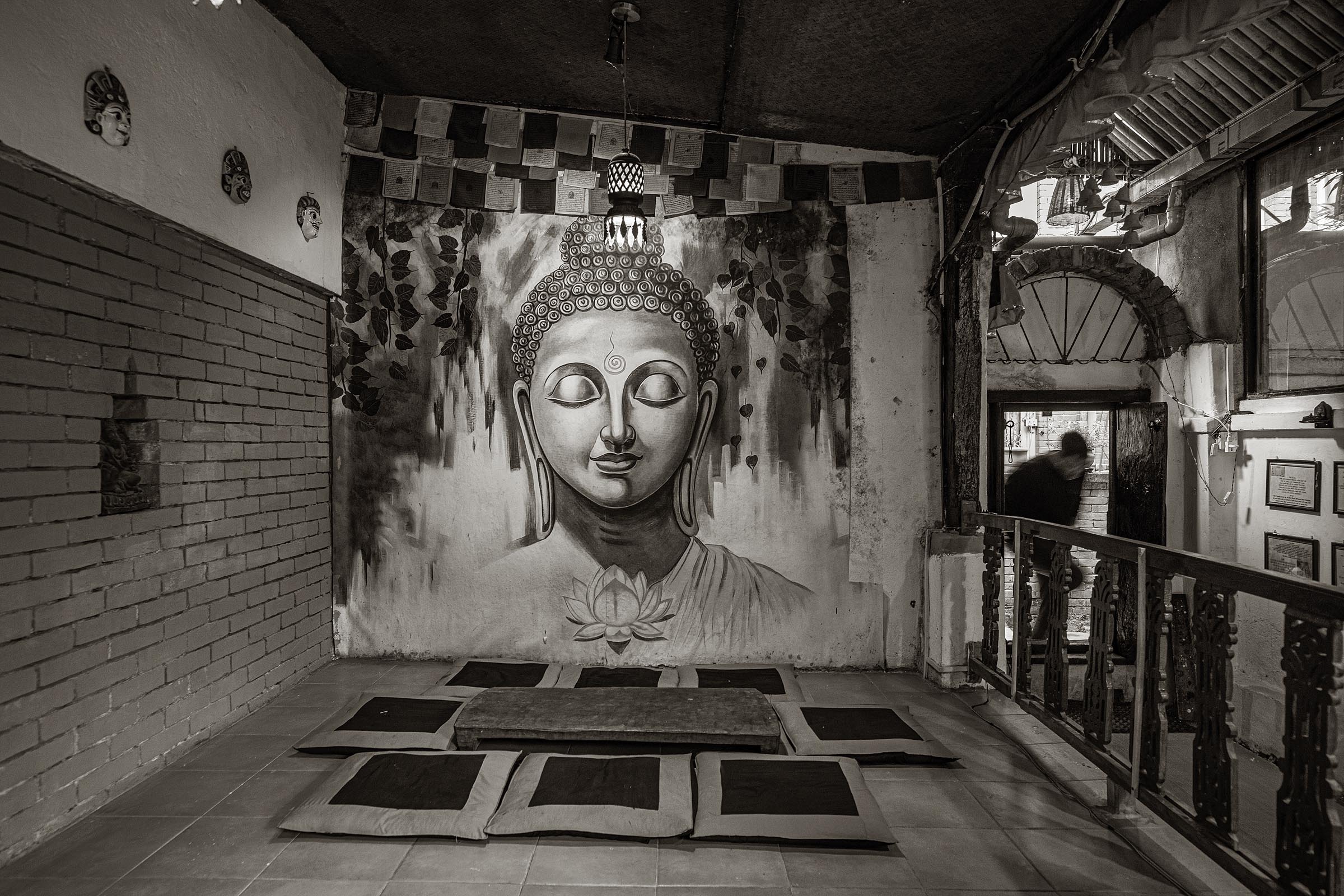
The Newa Lahana restaurant where one can enjoy traditional Newari cuisine.
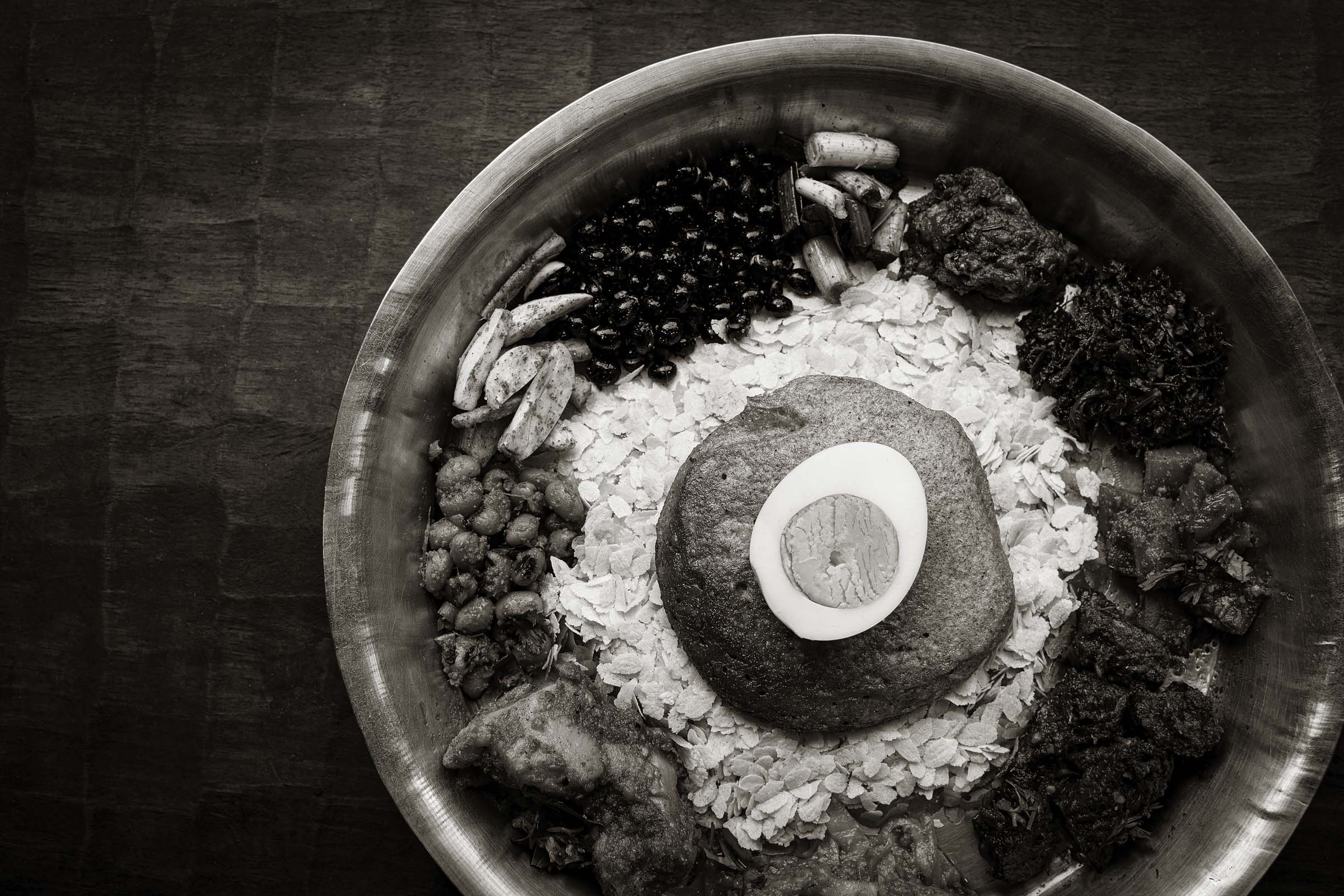
A traditional Newari dish known as Sami Baji, in which beaten rice, served dry, is surrounded a variety of preserved vegetables, meats, black soybeans, potatoes, a lentil patty, and an egg.
While in search of other things to taste, I found The King of Curd, where I met Ramila Duwa, a third-generation yogurt producer. She shared with me her order of King of Curd, which in its original king-size form was more than I could possibly consume on my own. Fortunately, she offers petite sizes of the product for those who would not be king. The yogurt, made from a combination of buffalo and cow milk, is lightly sweetened and fermented in clay bowls. The result is rich and creamy and unlike any yogurt I’ve had before.
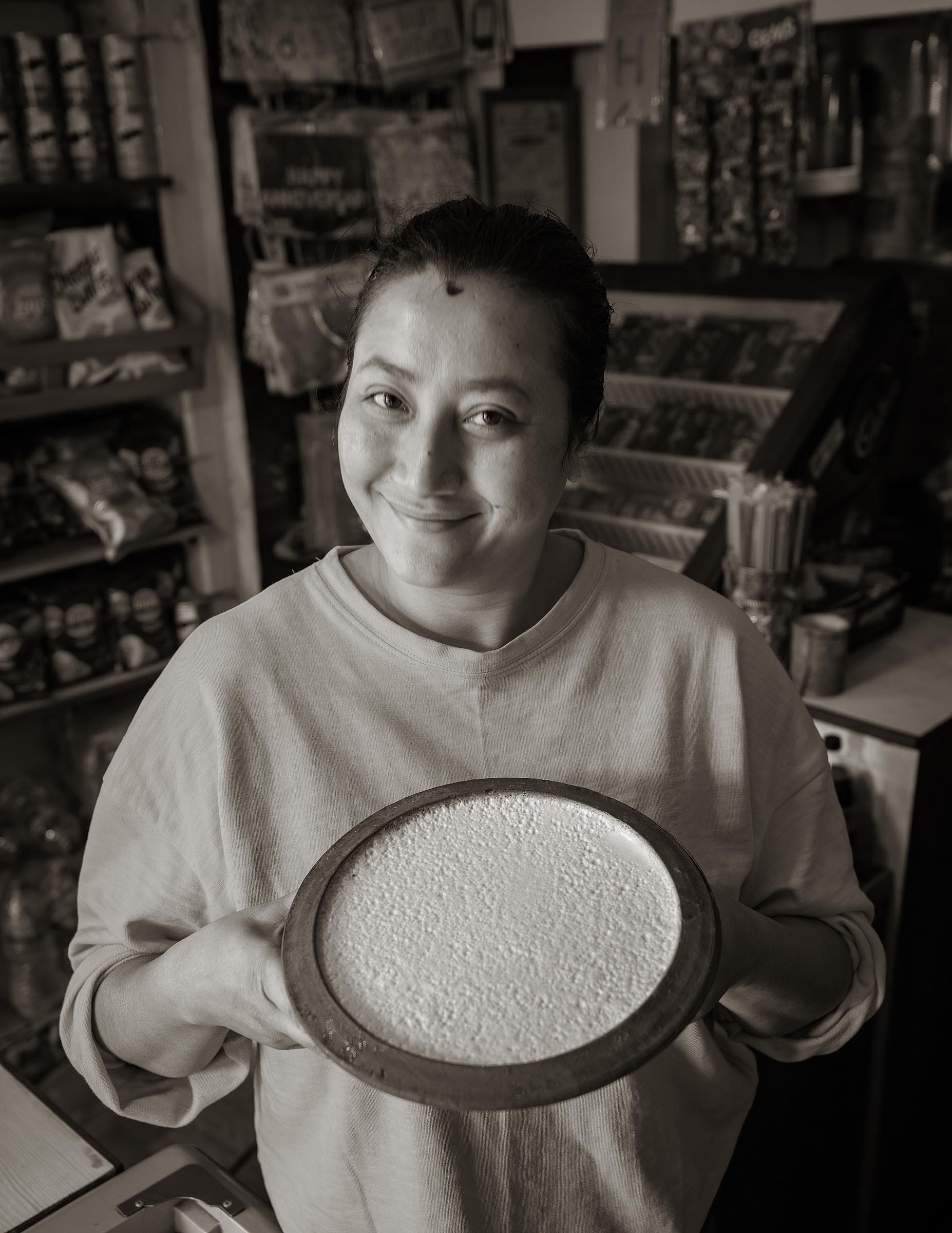
Ramila Duwa, a third-generation yogurt maker, displays her King of Curd at her shop just off Taumadhi Square.
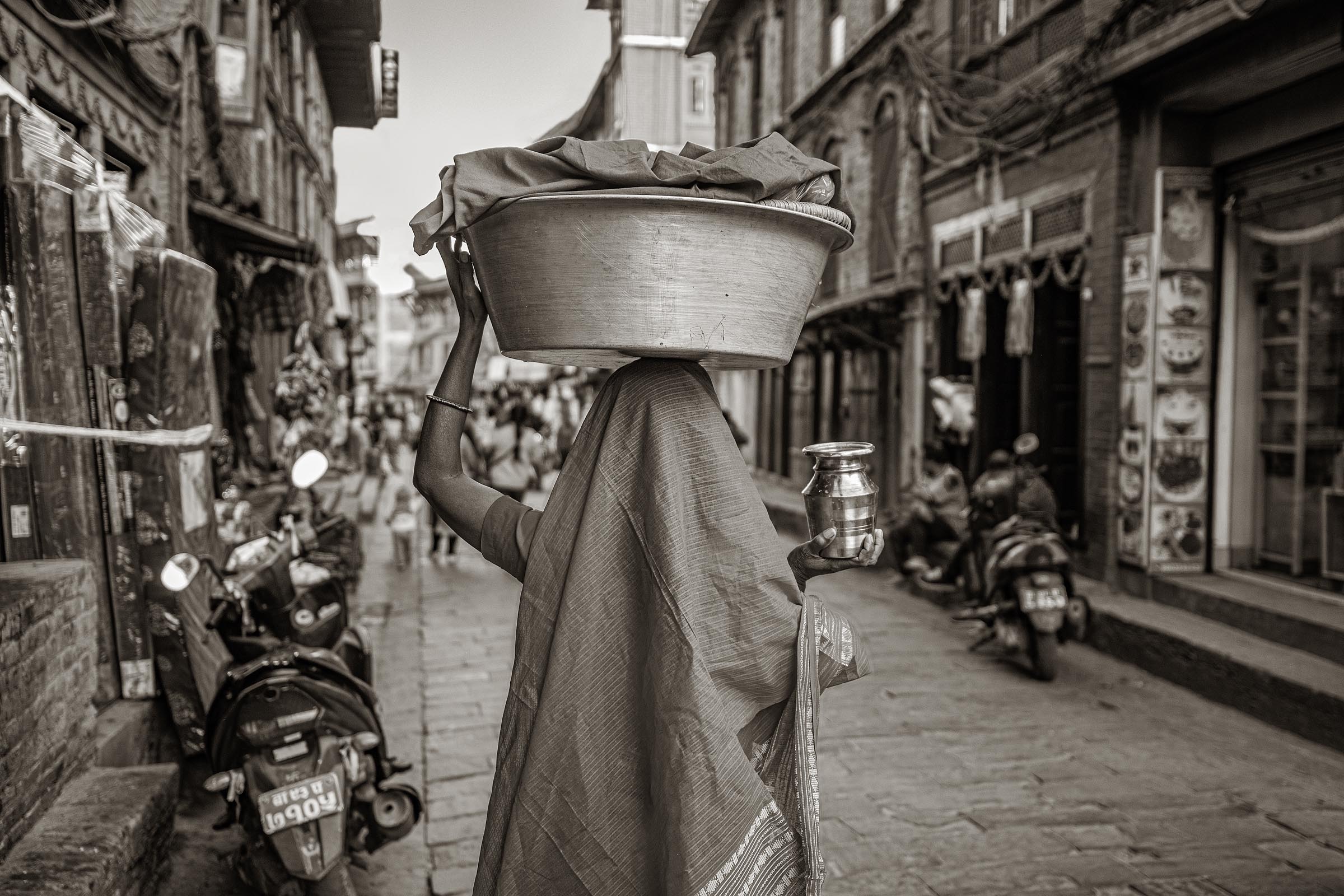
Bhaktapur is a city meant to be explored on foot. Meandering down its many little alleyways never gets boring. If one does feel the need for a break there are plenting of squares where one can just sit and watch daily life unfold.
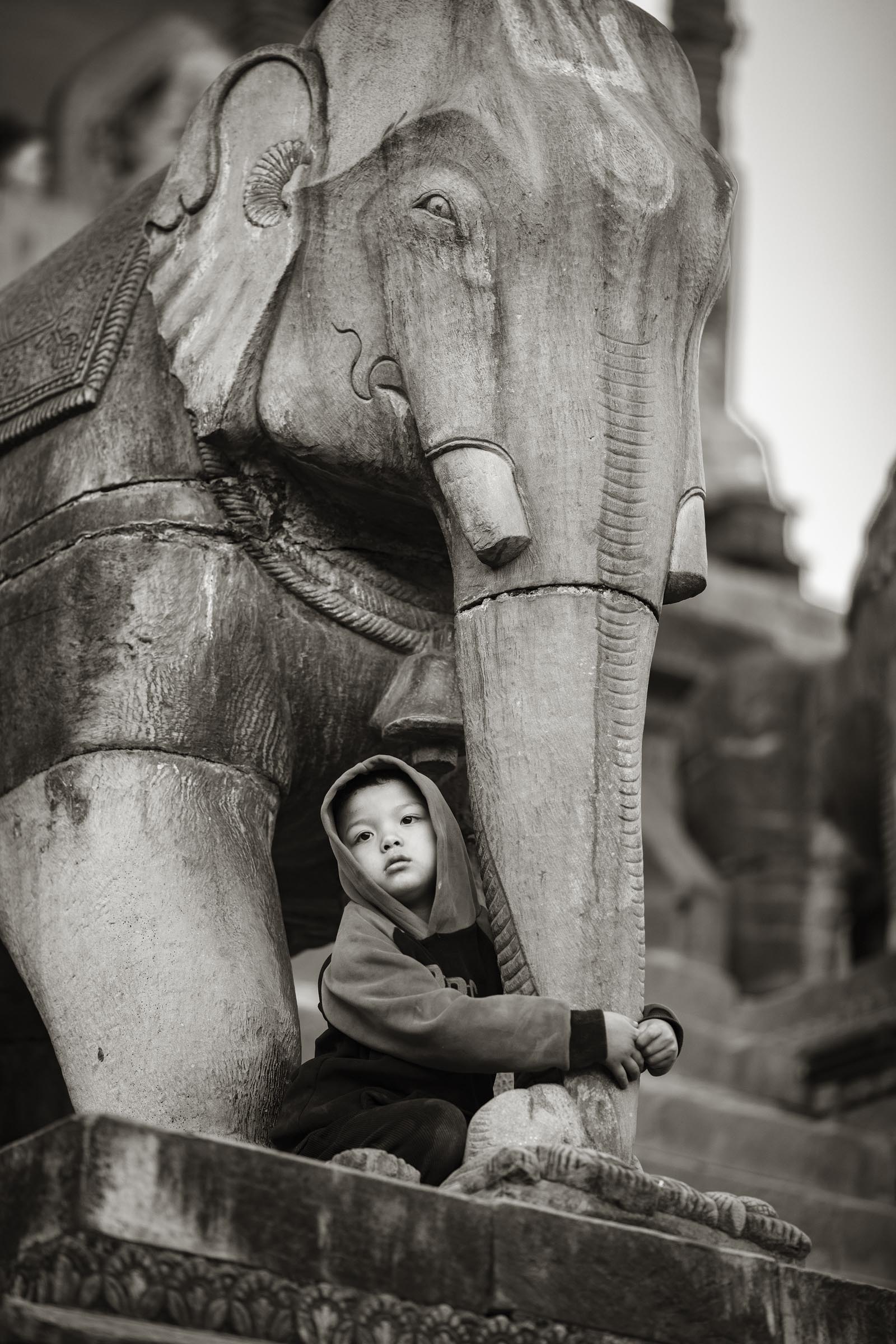

Children hanging out and clowing around on the steps leading up to the Nyatapola Temple.
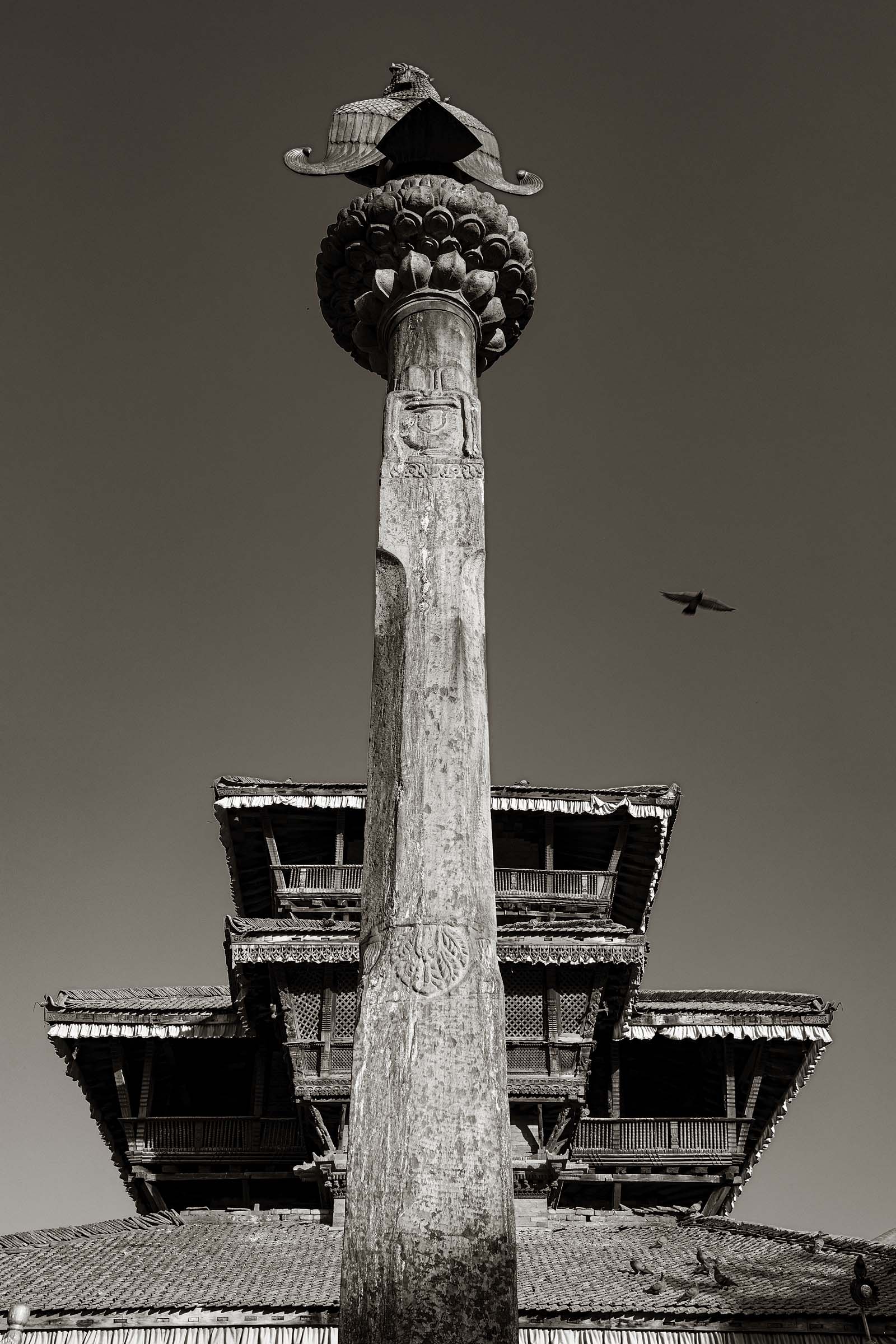
As mentioned earlier, it’s at the beginning and end of the day that one can best observe traditional Newar activities. The sound of clanging bells at the nearby temple was my alarm clock, as early risers would begin their day with prayers and offerings. I will long remember watching and listening to the ancient city slowly winding down from another bustling day as I sat atop the steps of Nyatapola Temple in Taumadhi Square. And each night, it was musicians playing traditional instruments in the square that lulled me to sleep.
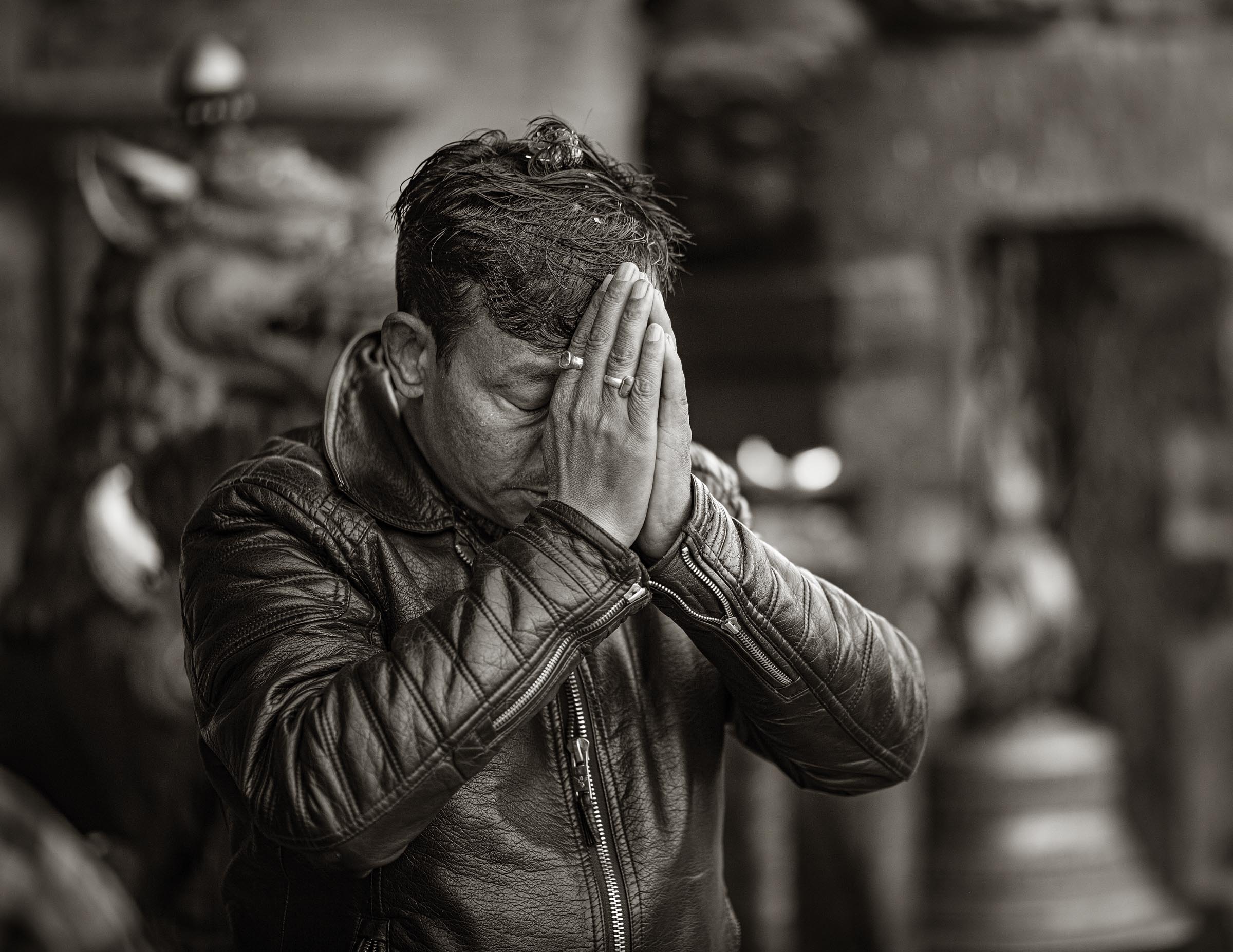
Temples around the city are alive with activity expecially in the mornings and evenings.
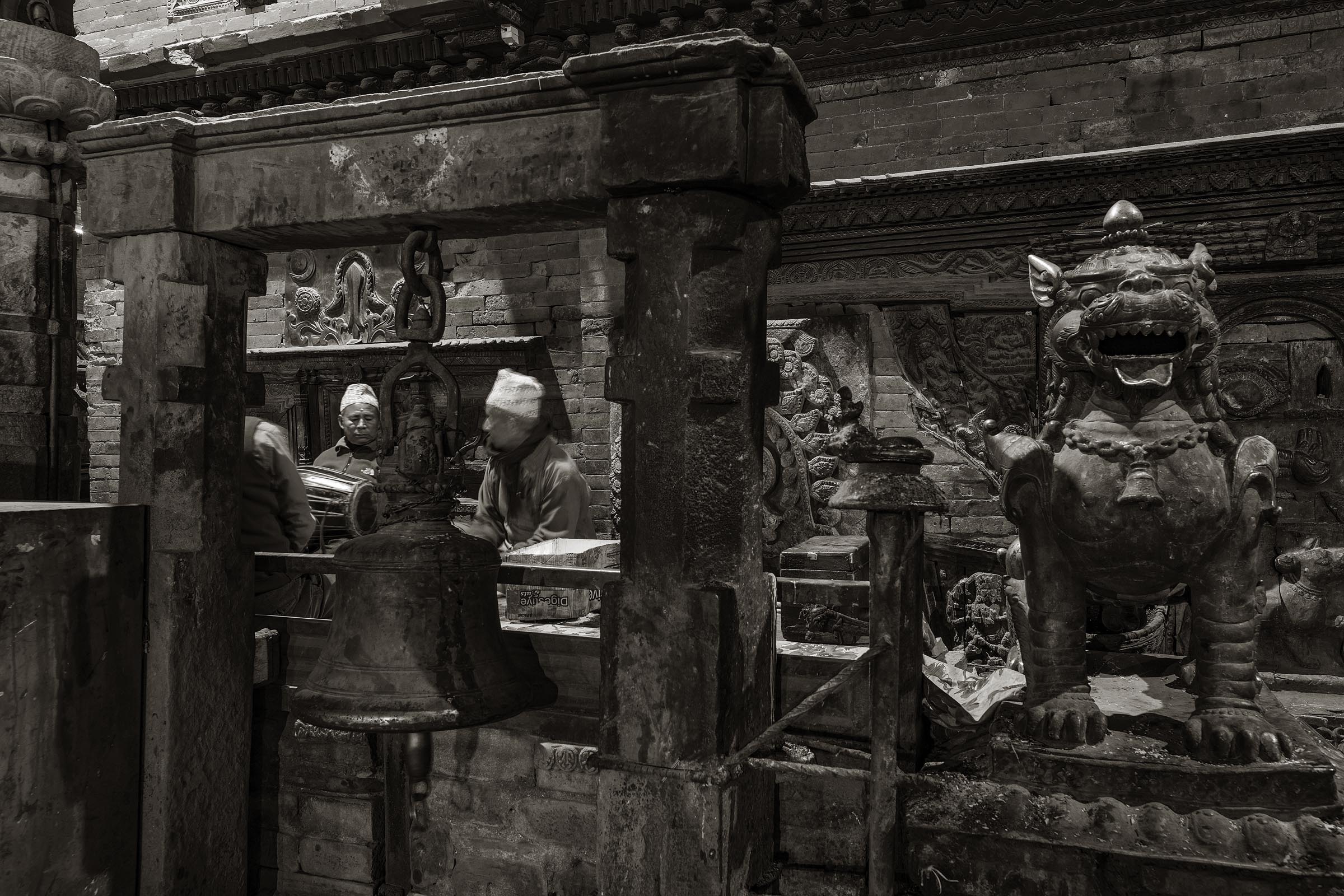
Musicians gather and perform in the evenings in front of a temple.
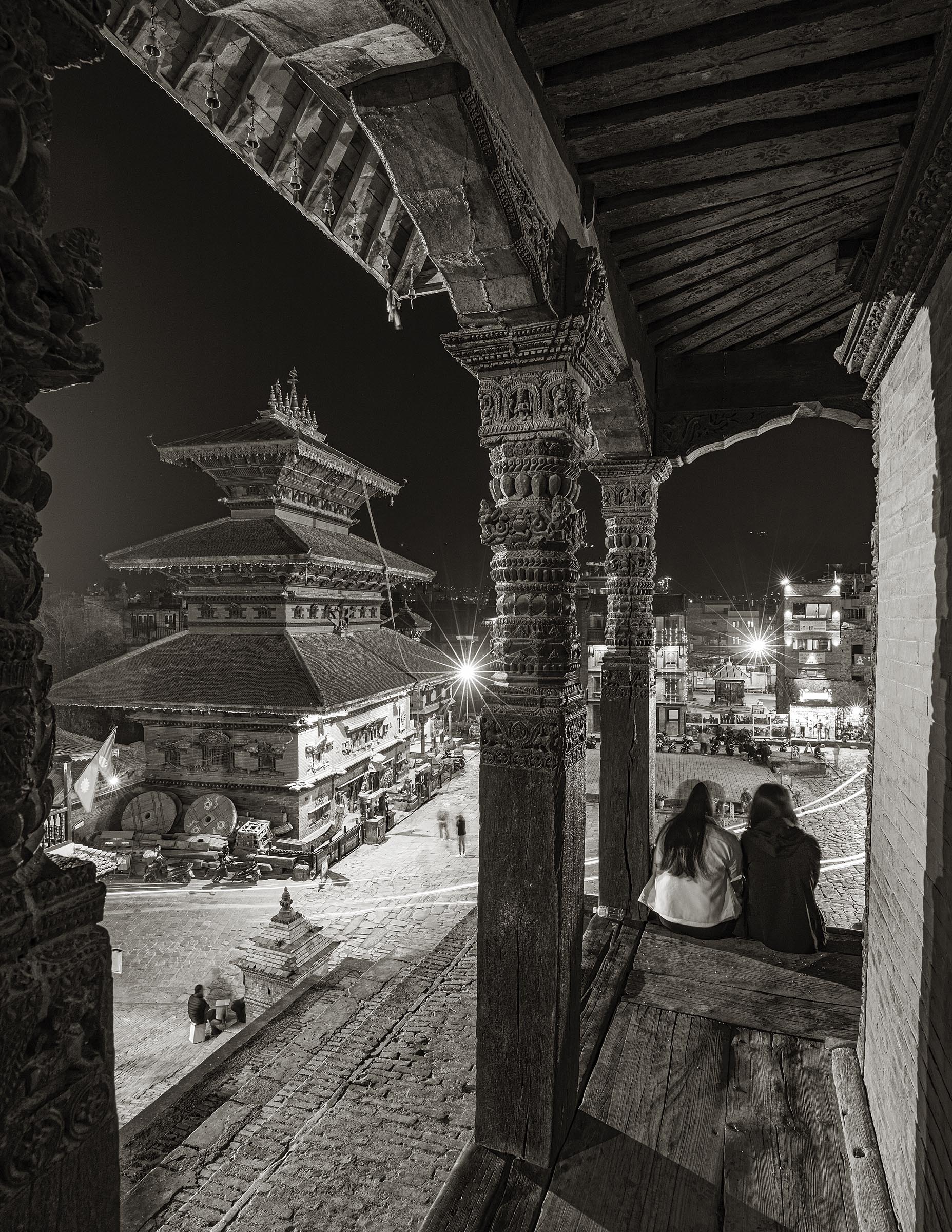
An evening view from of Taumadhi Square from Nayatapola Temple.
This story, and a selection of the images, appears in Tasting Kitchen (TK) magazine in the June 2024 issue titled Cloud Kingdom. To see this and other stories about Nepal you are welcome to view the entire issue online by following this link – https://issuu.com/tastingkitchen/docs/tk56_cloud_kingdom_s_



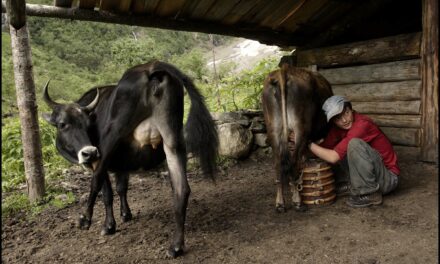
WOW!!!
Beautiful images.
What more is there to say?
Michael Meek shared your page! What beautiful photography. We were in Nepal prior to the royal family murders and the devistating earthquake. Such a beautiful place….the architecture, pottery, temples, etc. we loved Bhaktapur and all the craftsmen. Swell done!!
Thank you, Stephanie! Very nice of Michael to share my story and am happy you enjoyed it. Almost everyone that has visited Nepal comes away appreciating the place and many end up making return visits. This was my fourth visit with the first being back in the mid-90s. Many things have changed but it still maintains its charm.
Simply magical and mesmerising and so much so your images urges my wanderlust soul to go there and experience every details in your photos.
What a life experience to treasure even though it’s only on my iPhone sitting up in bed on a sunny morning. I can’t help imagining myself being there walking the streets with intrigue yet layback and calmly taken in all that is there where life is so very different from our own.
Thank you David for taken us there!
Thanks, March! Really appreciate your comments. Nepal has a special place in my heart. Would love to live there for a year or two and wander from place to place with my camera.